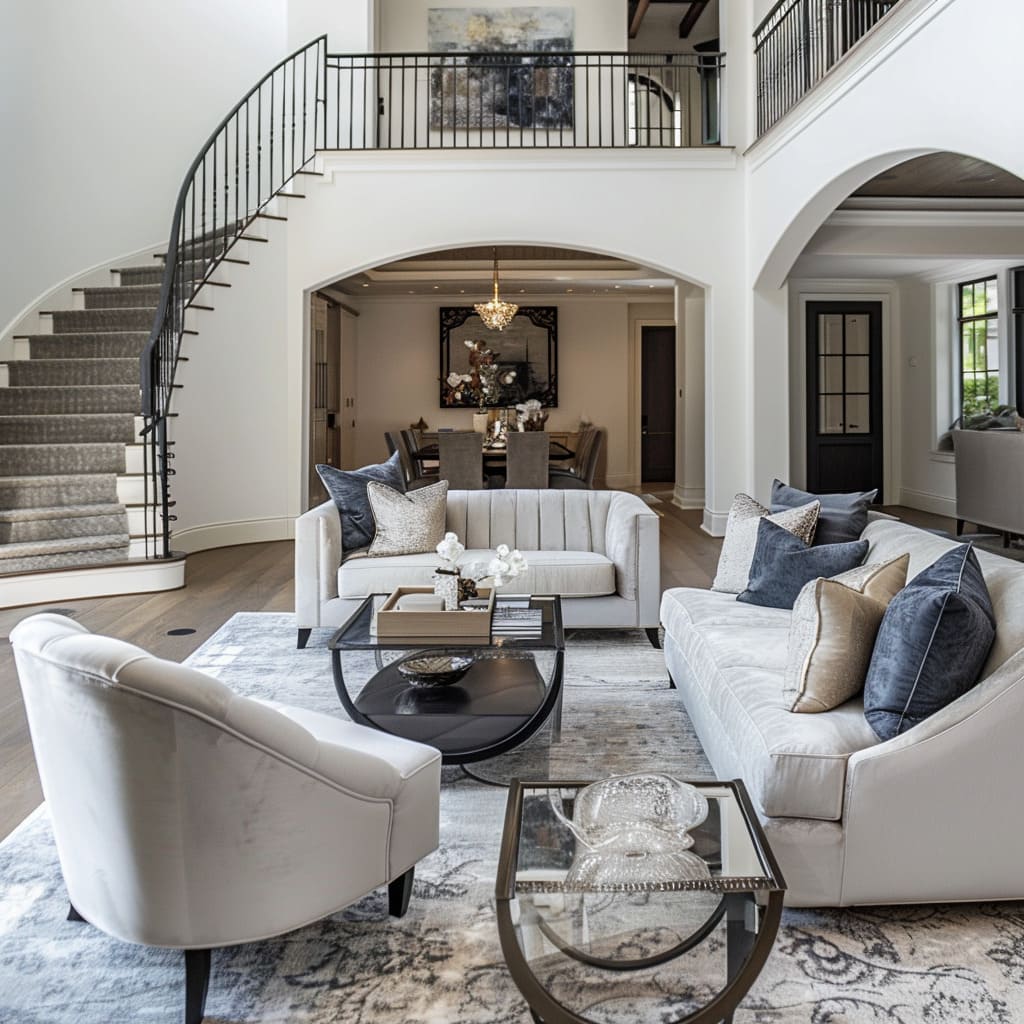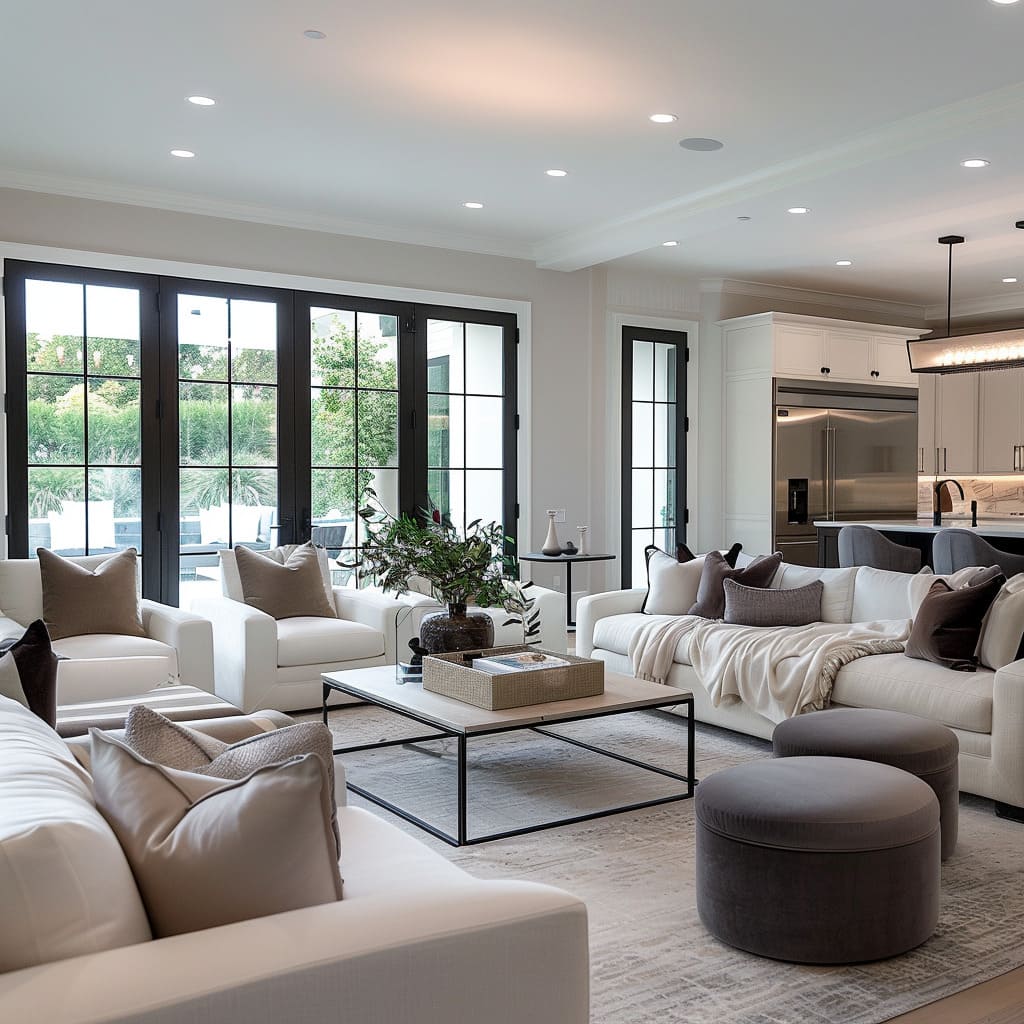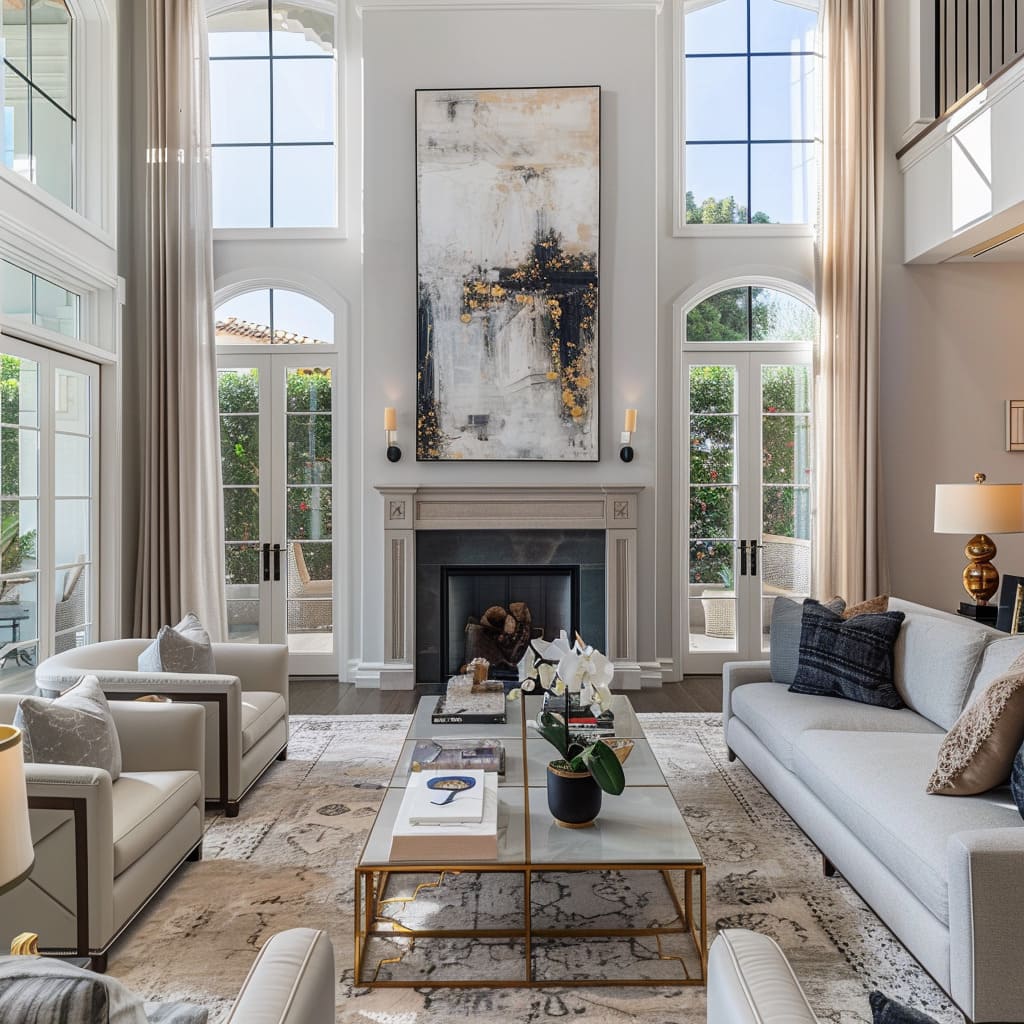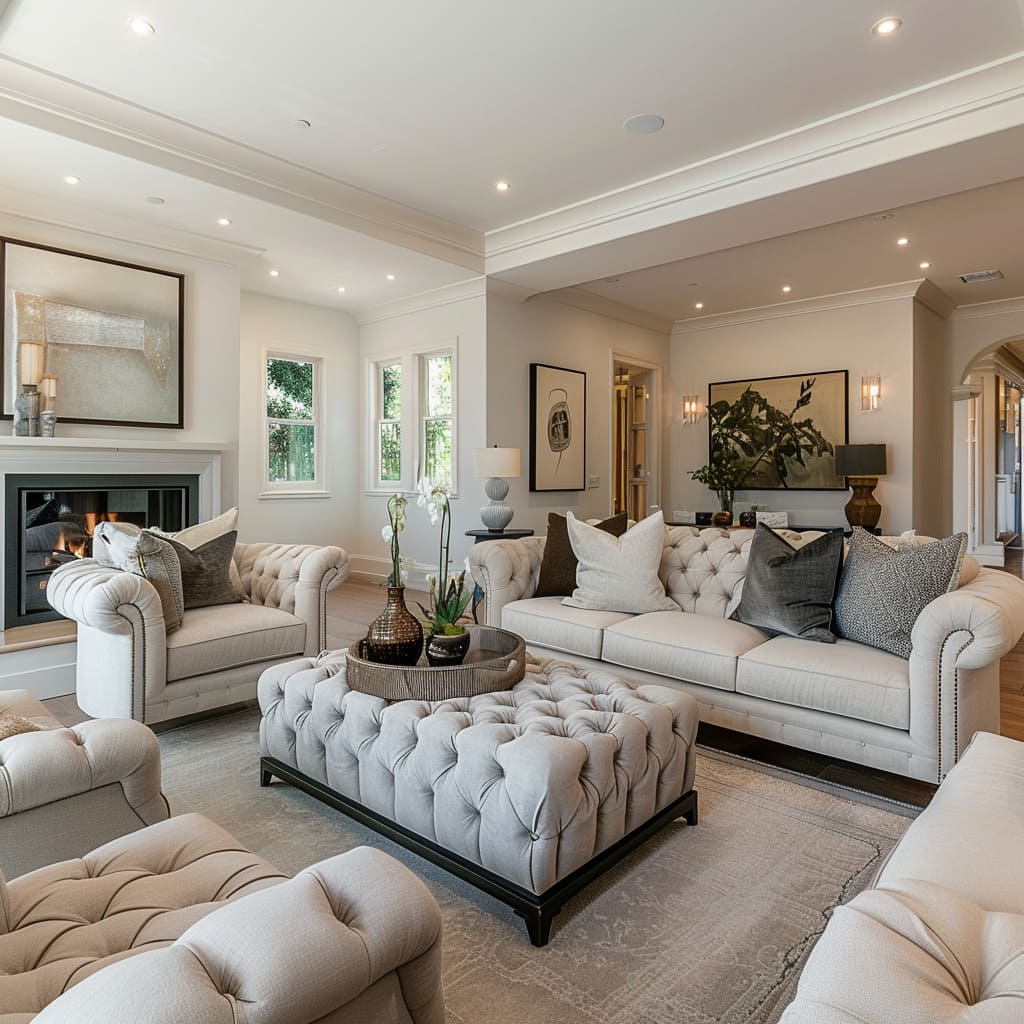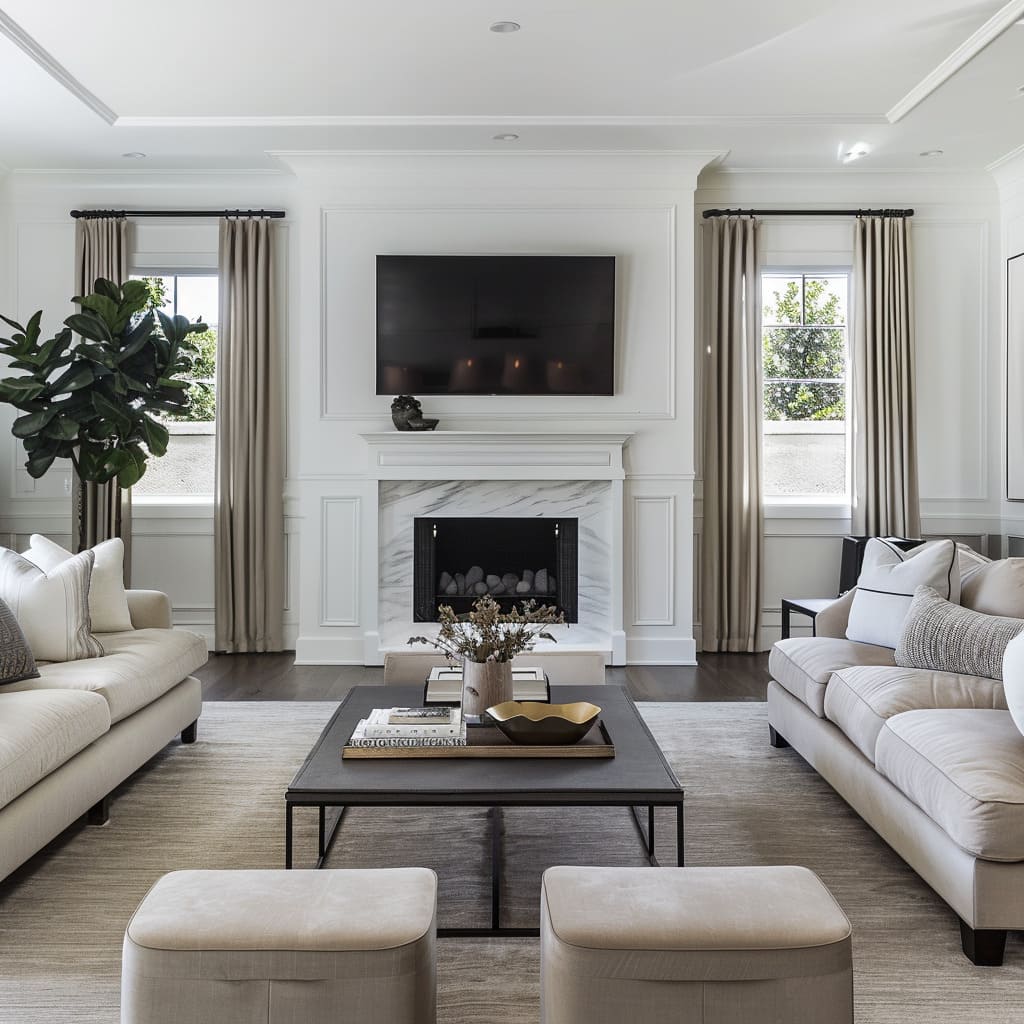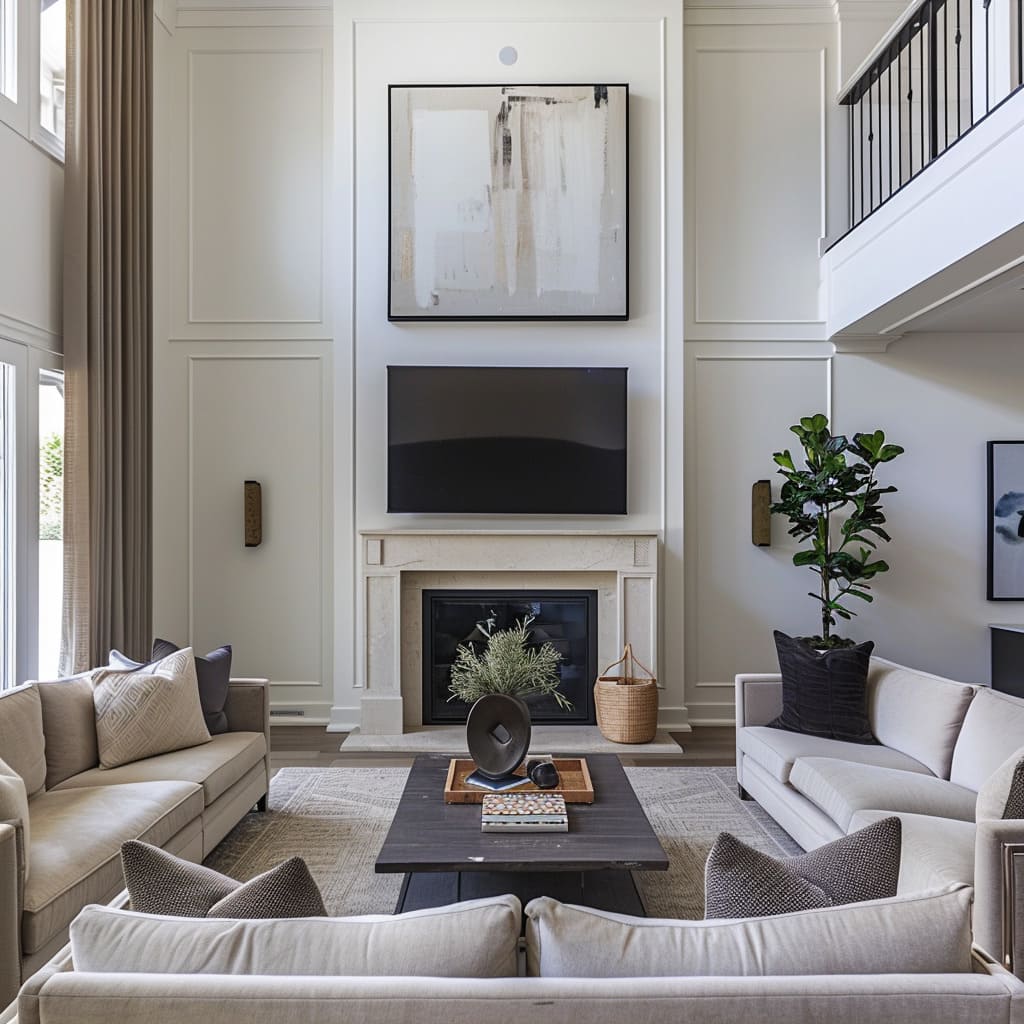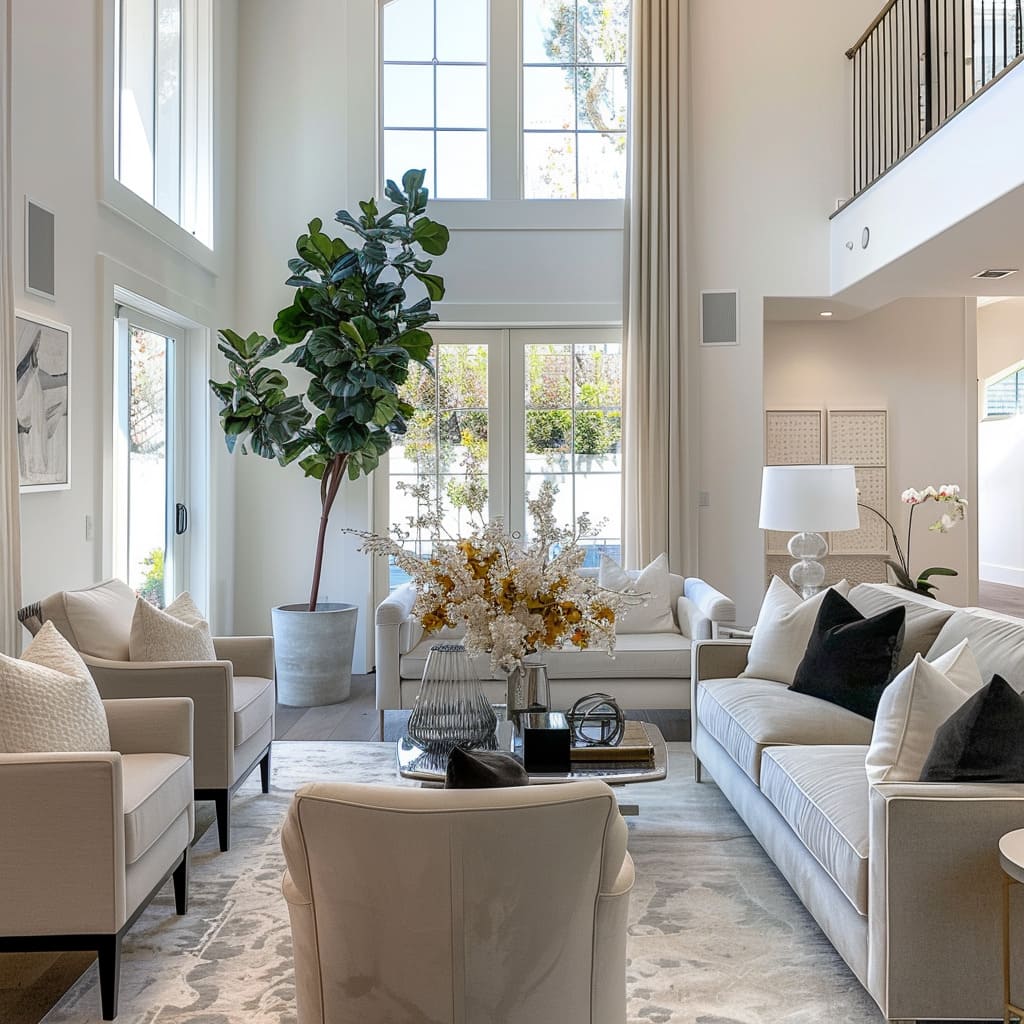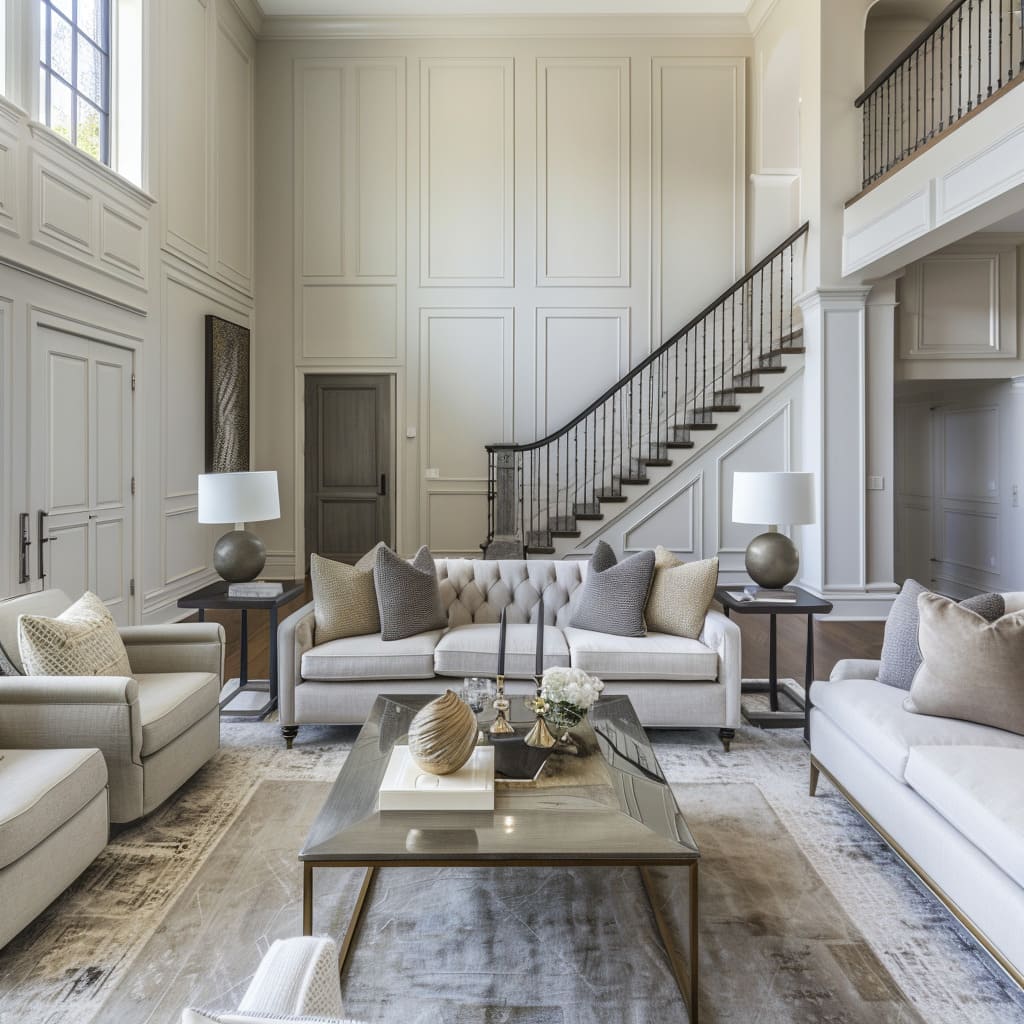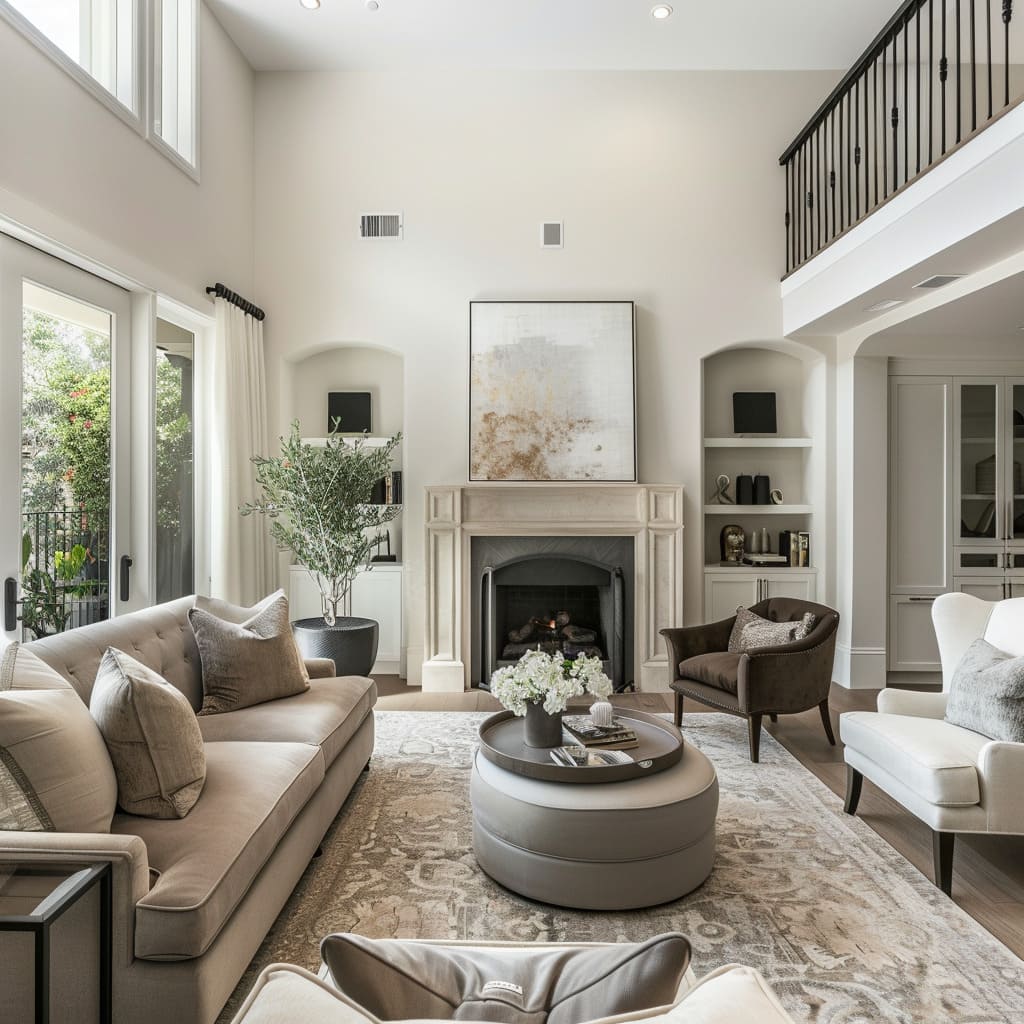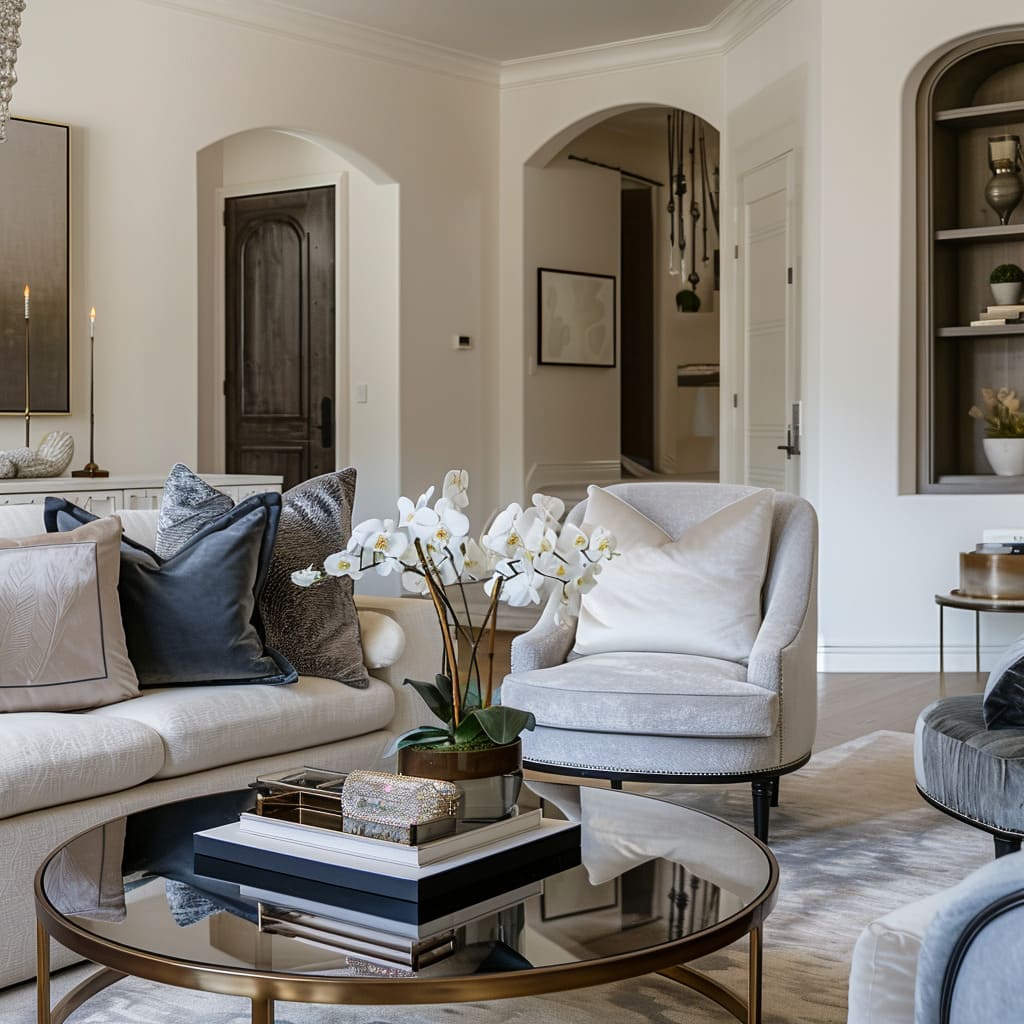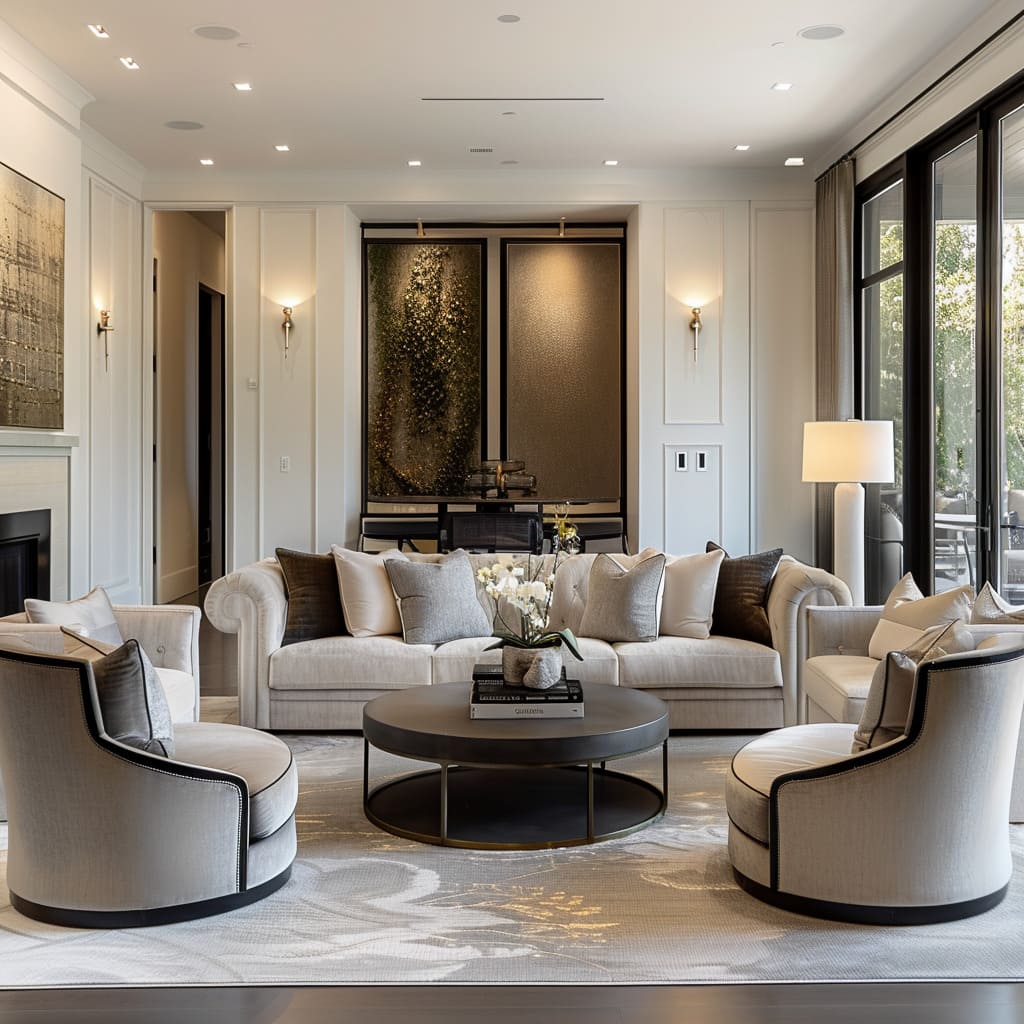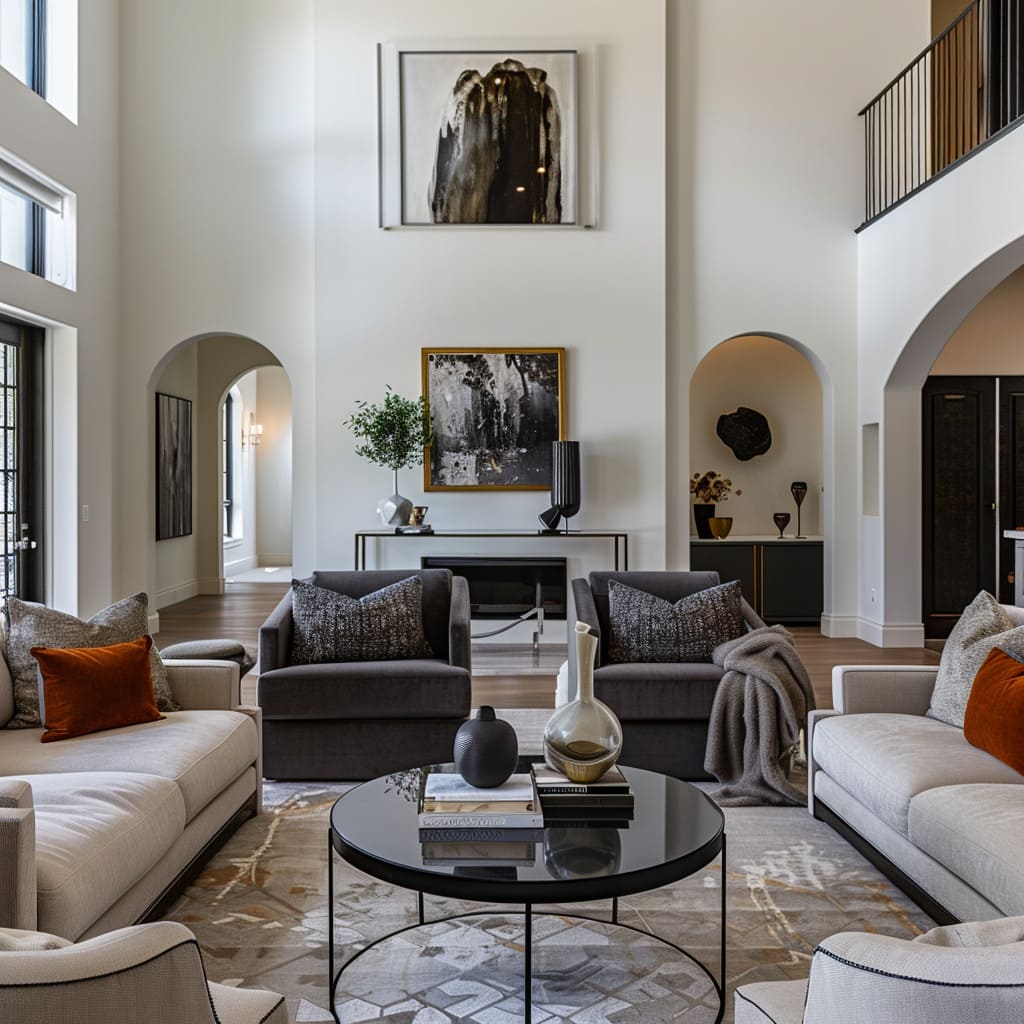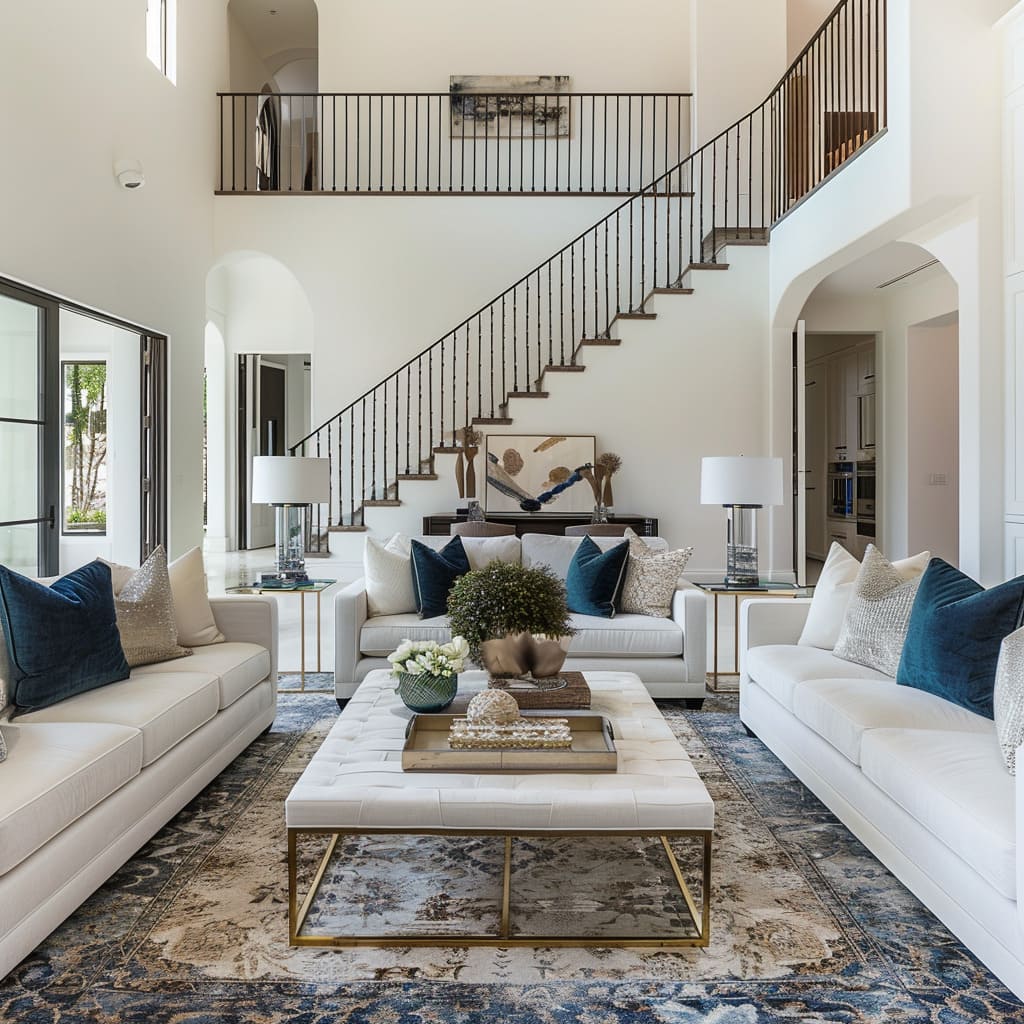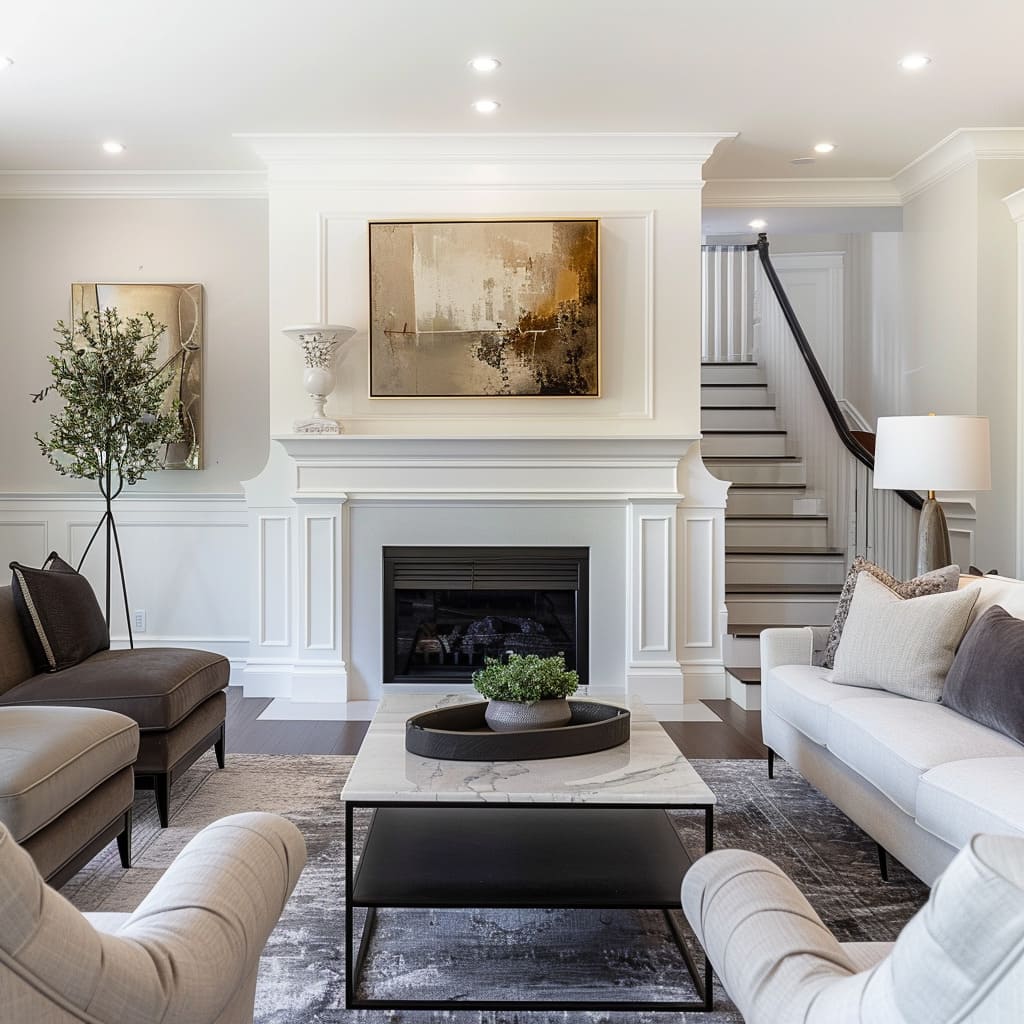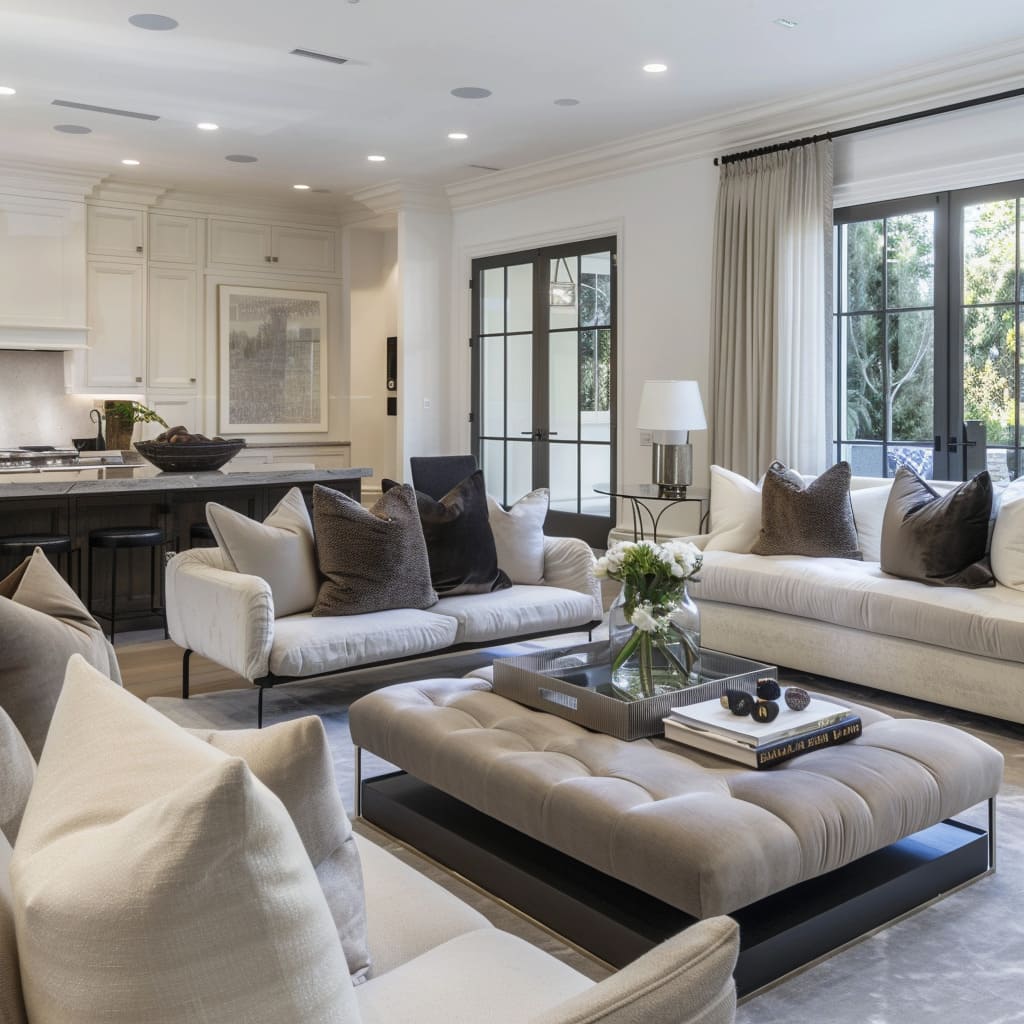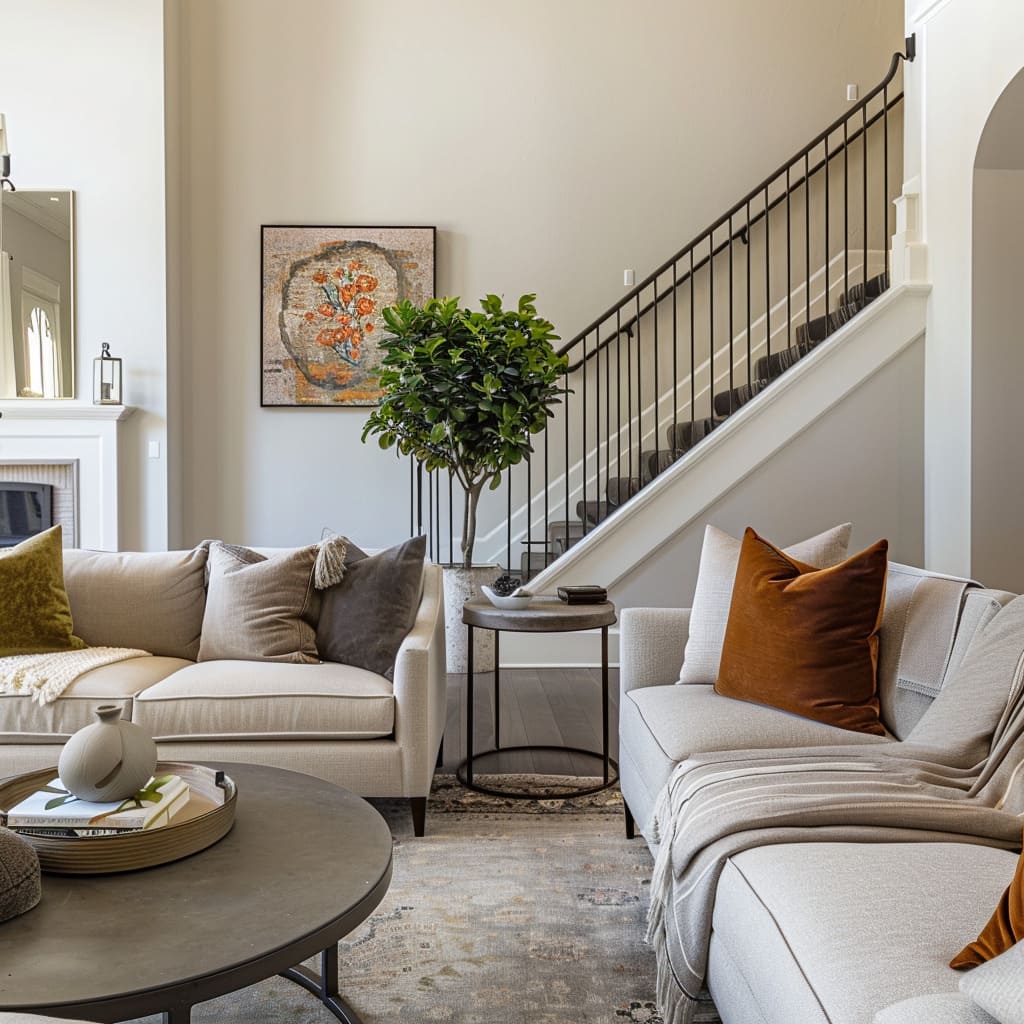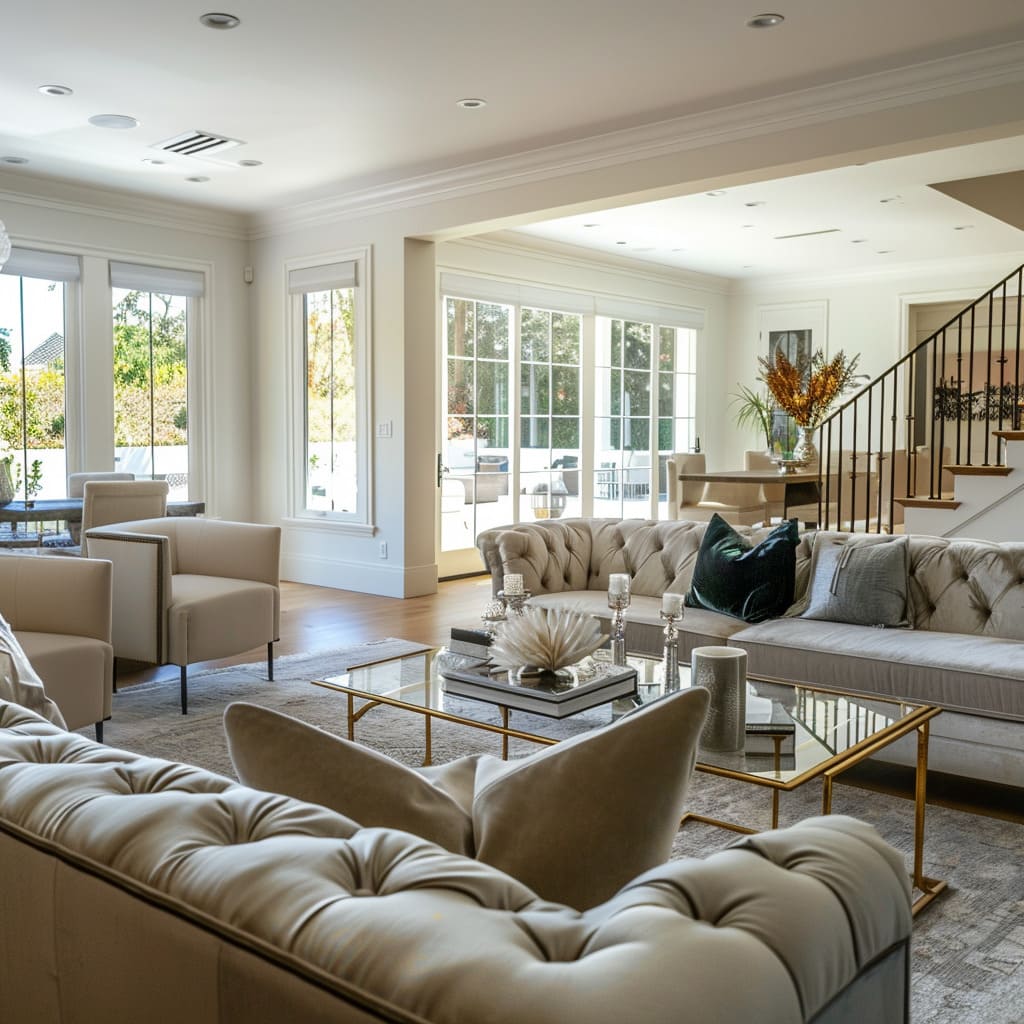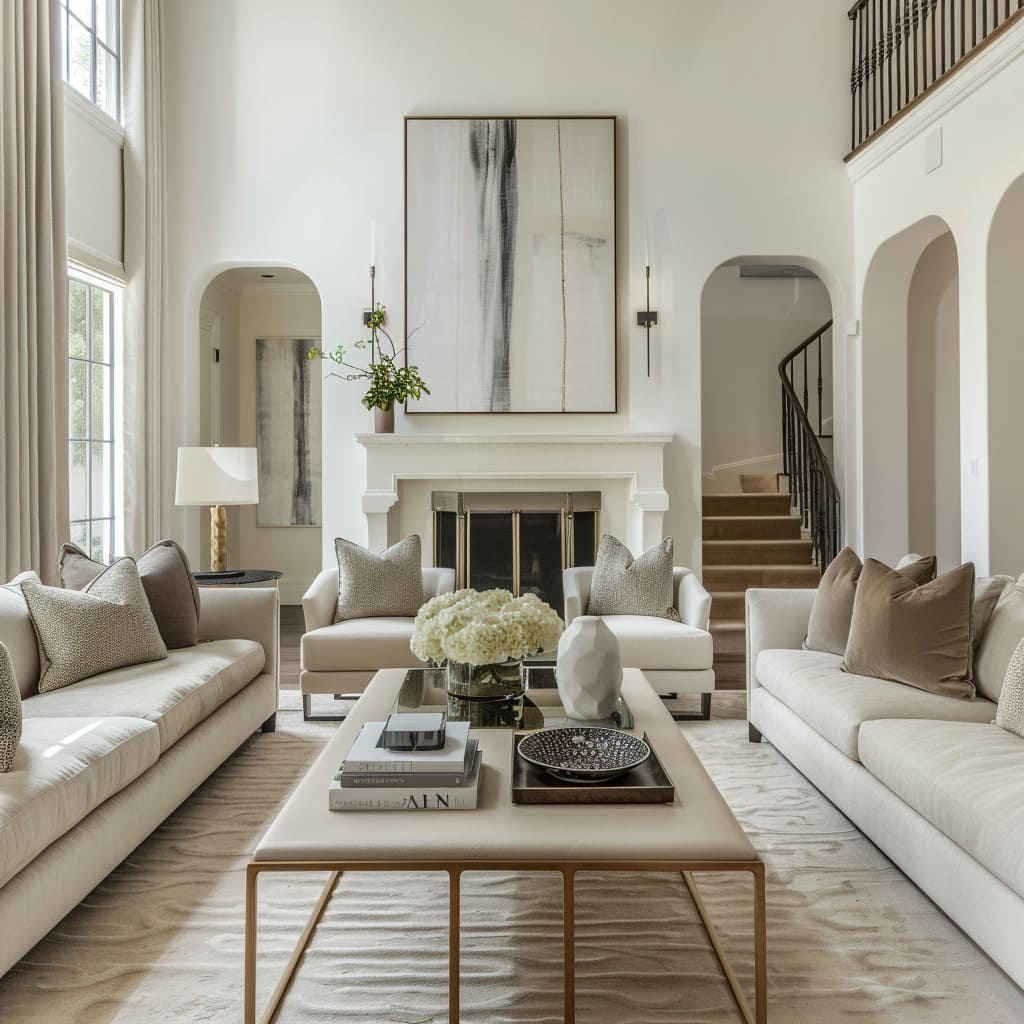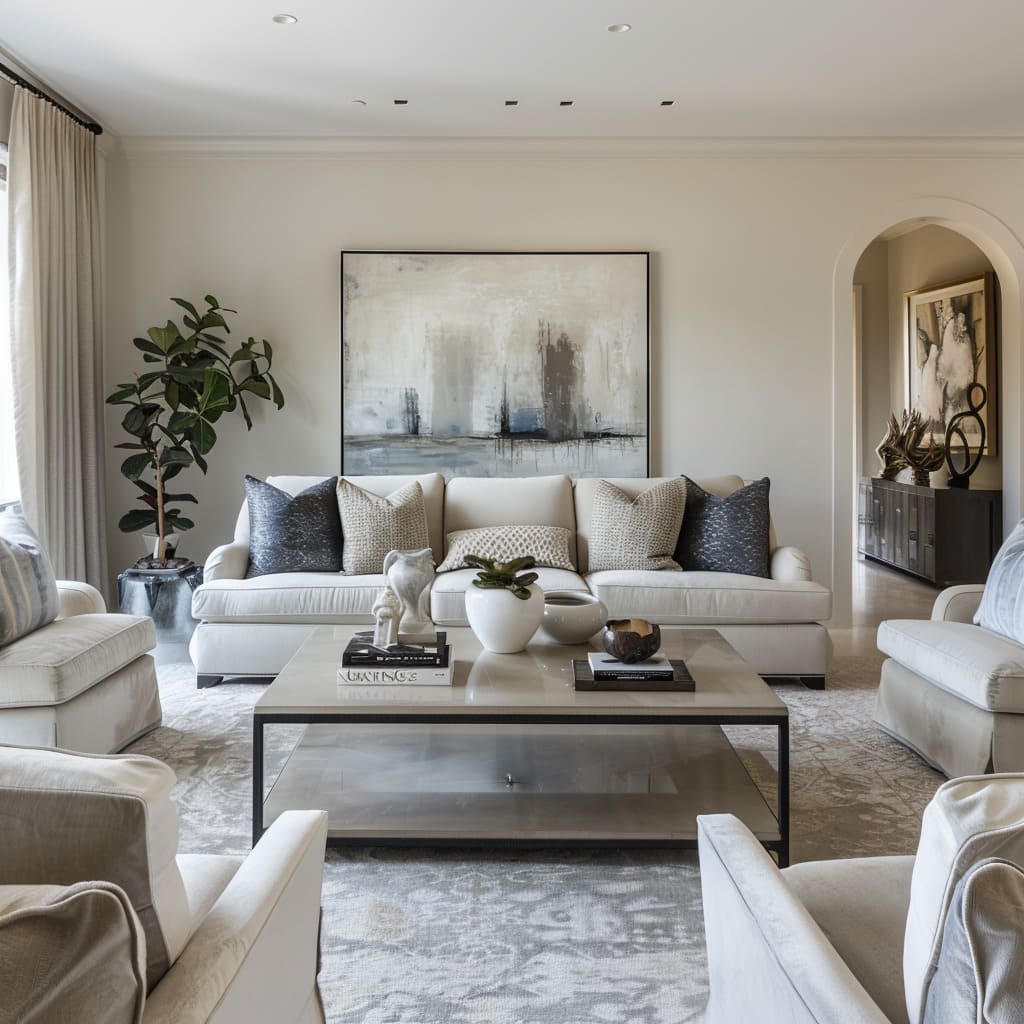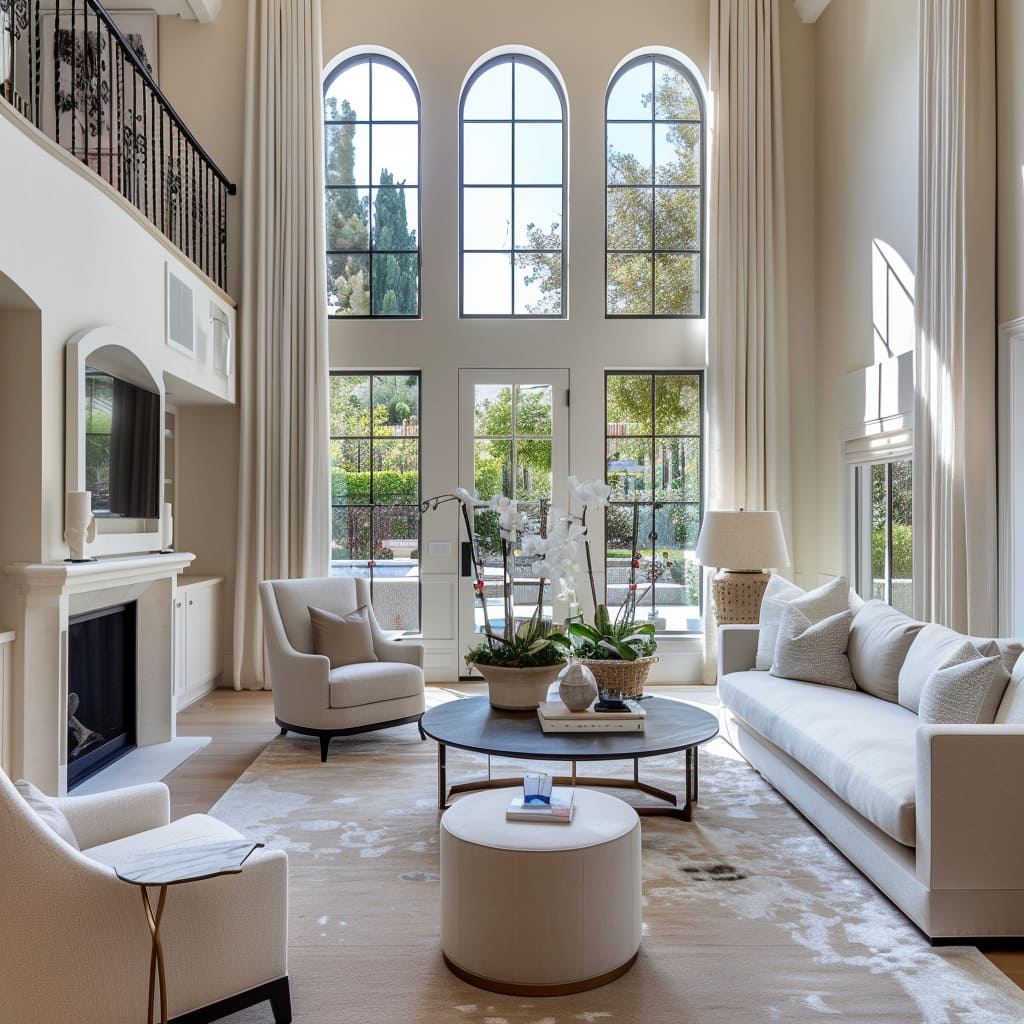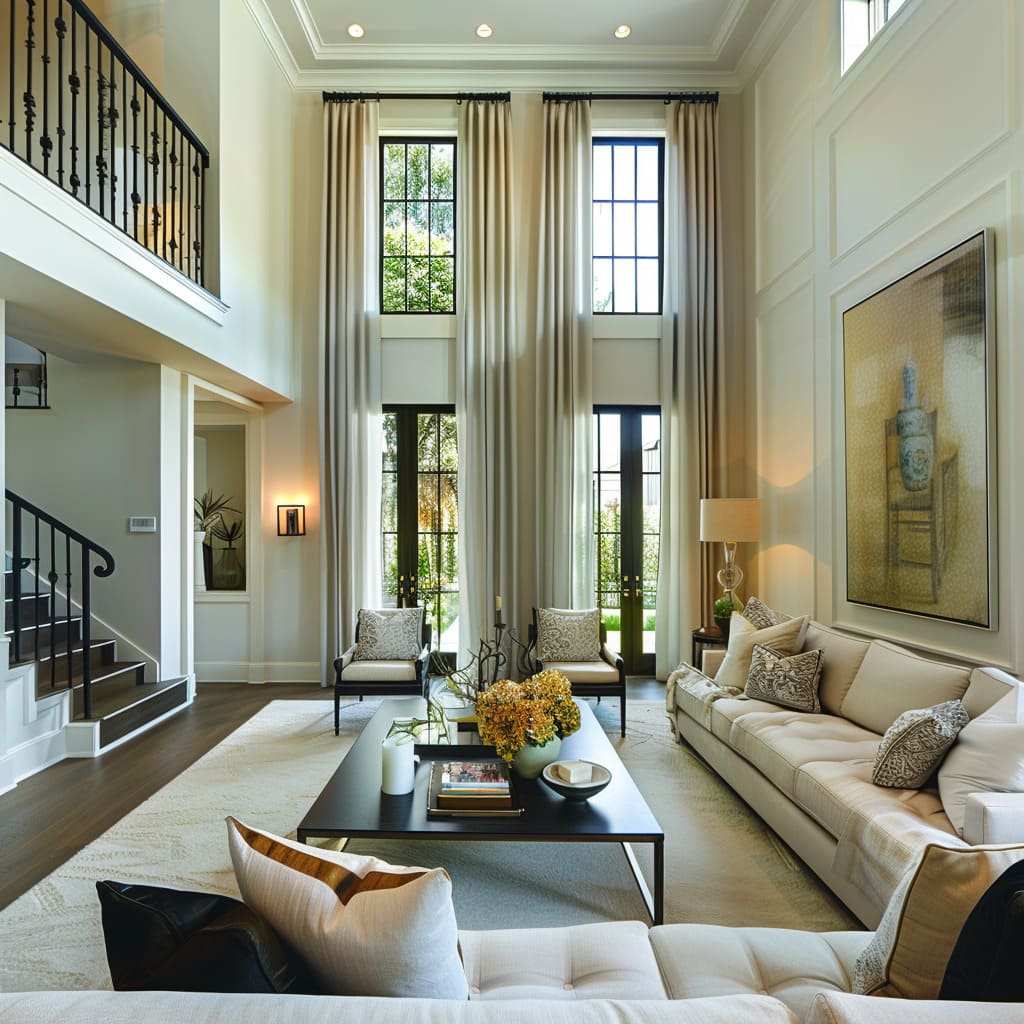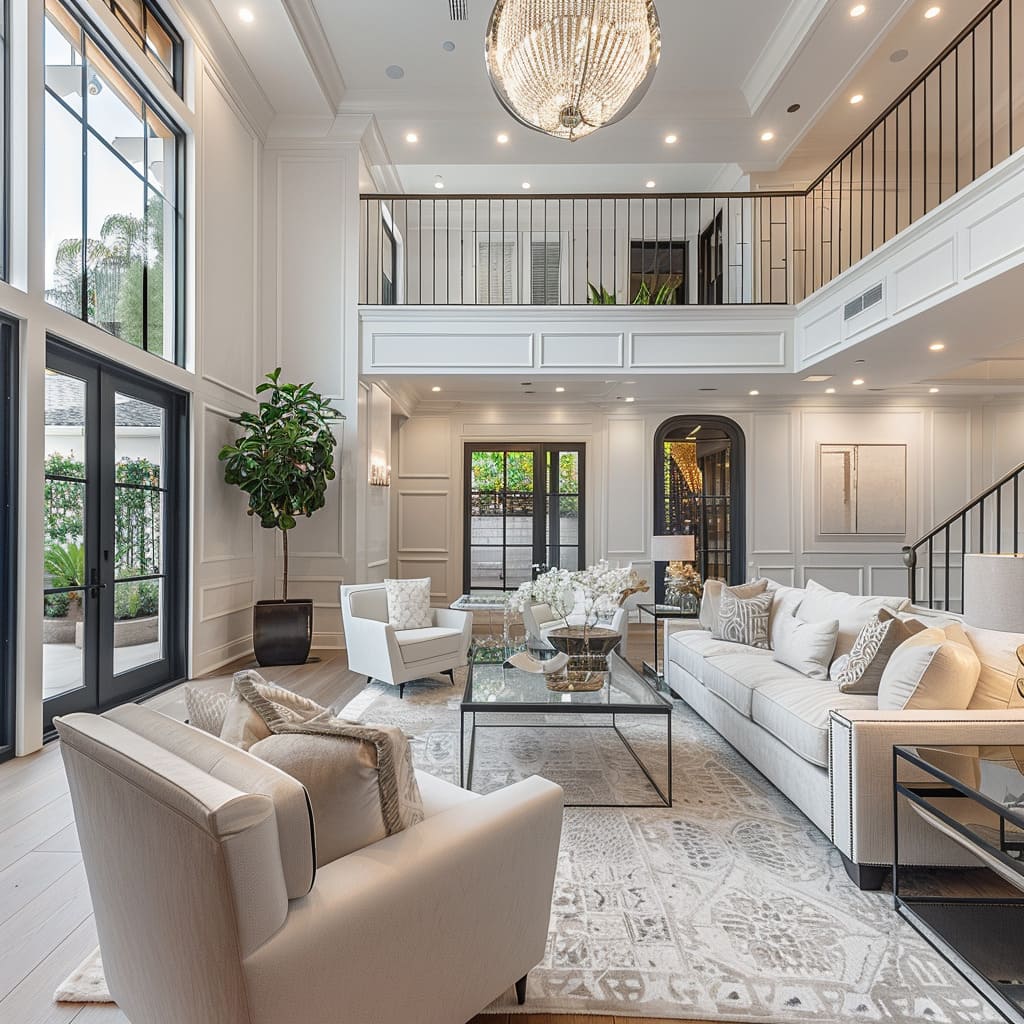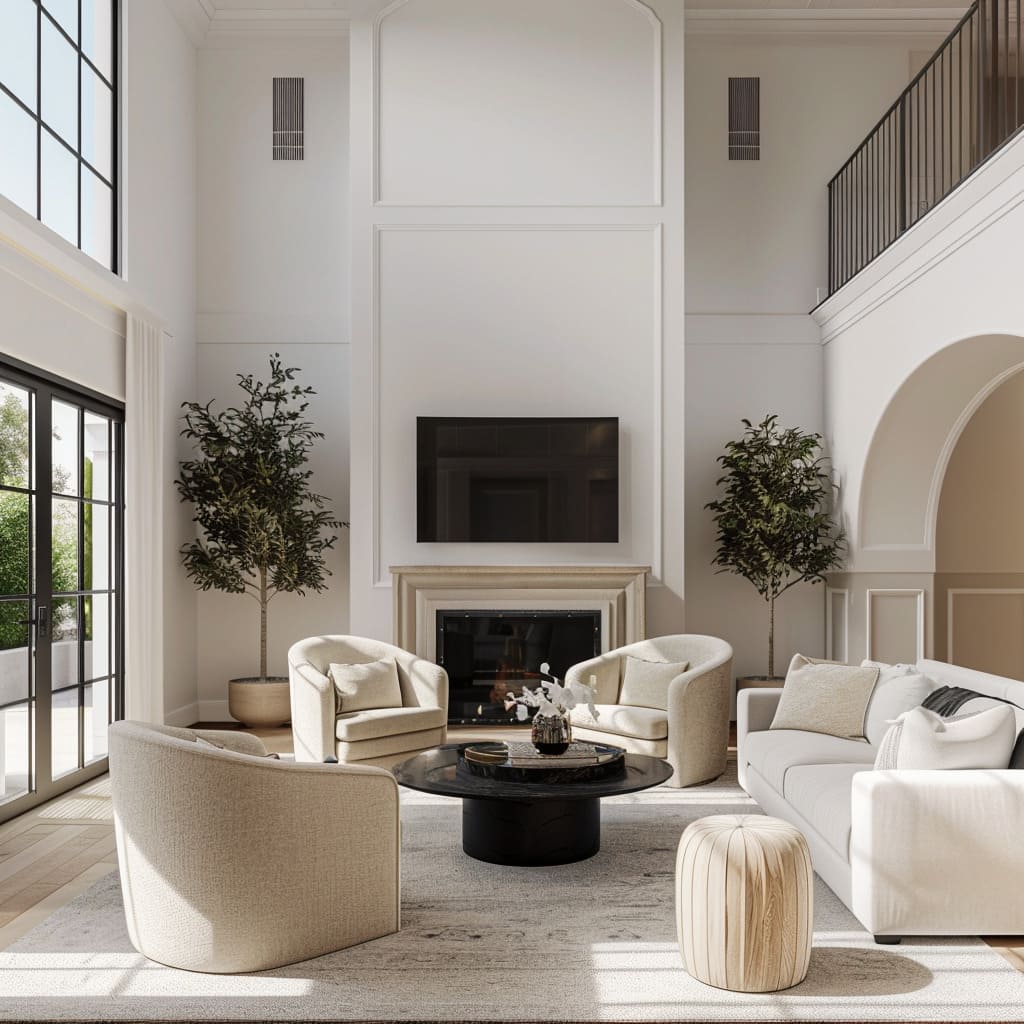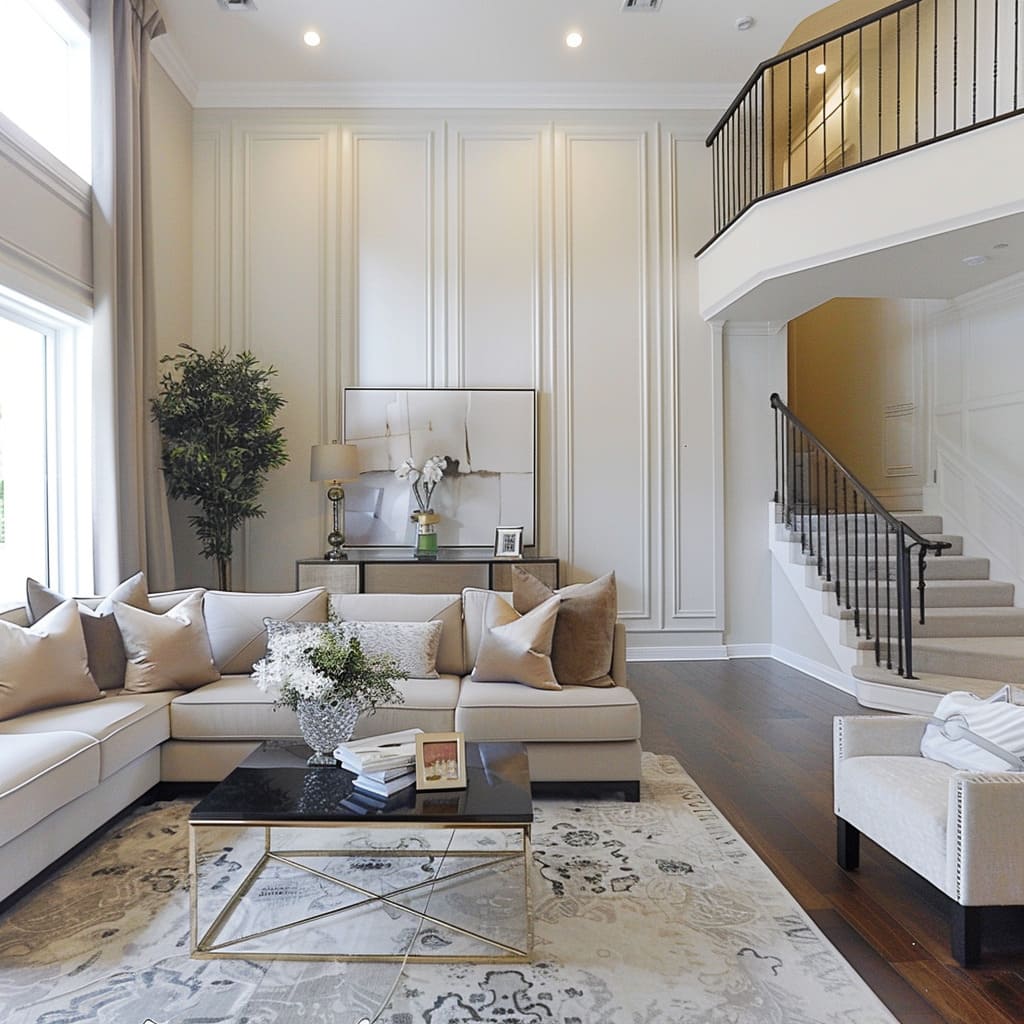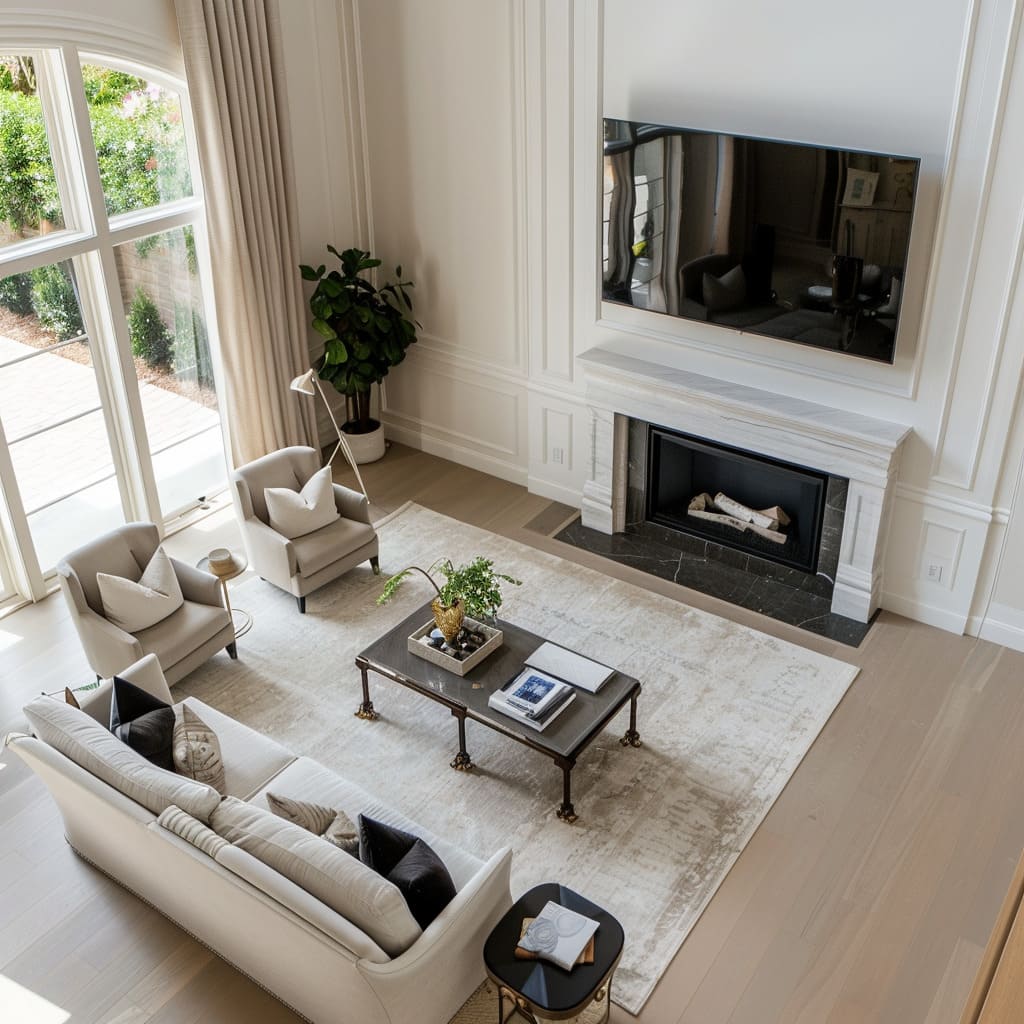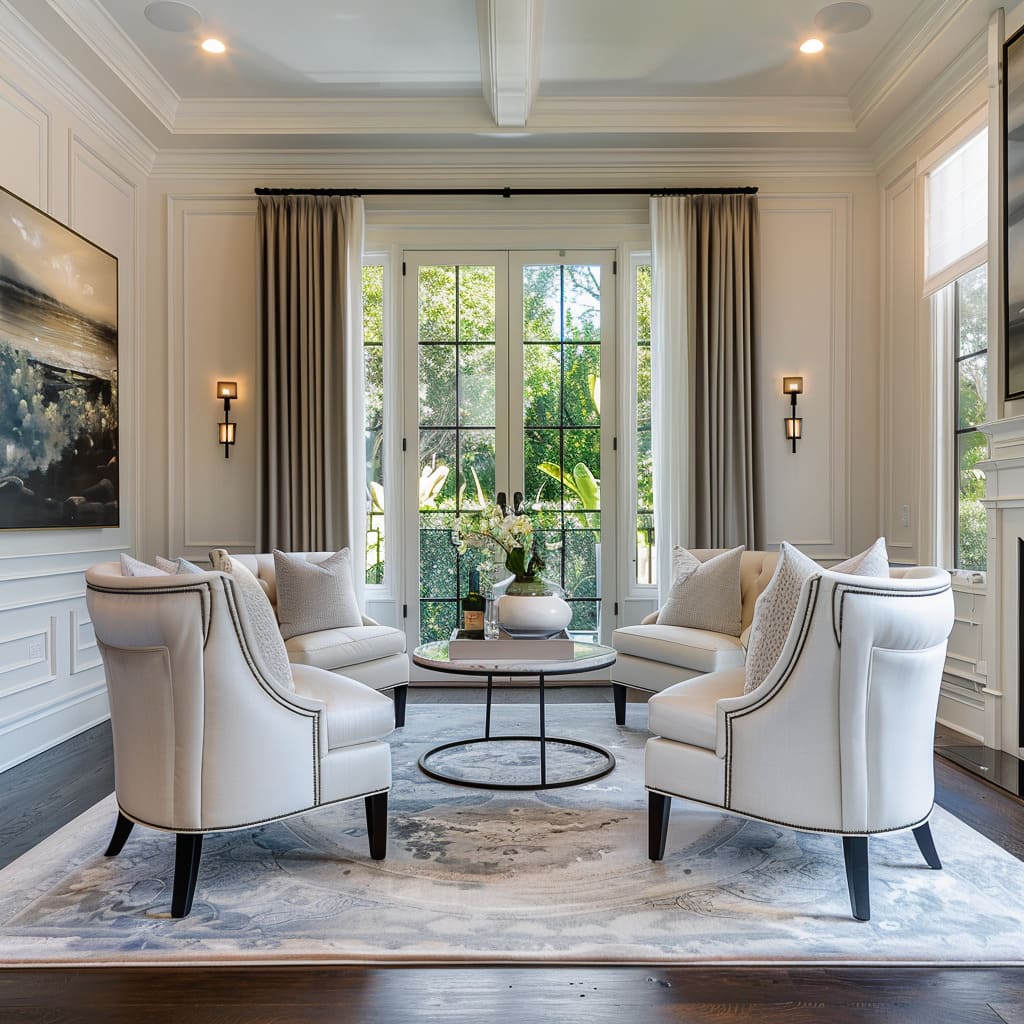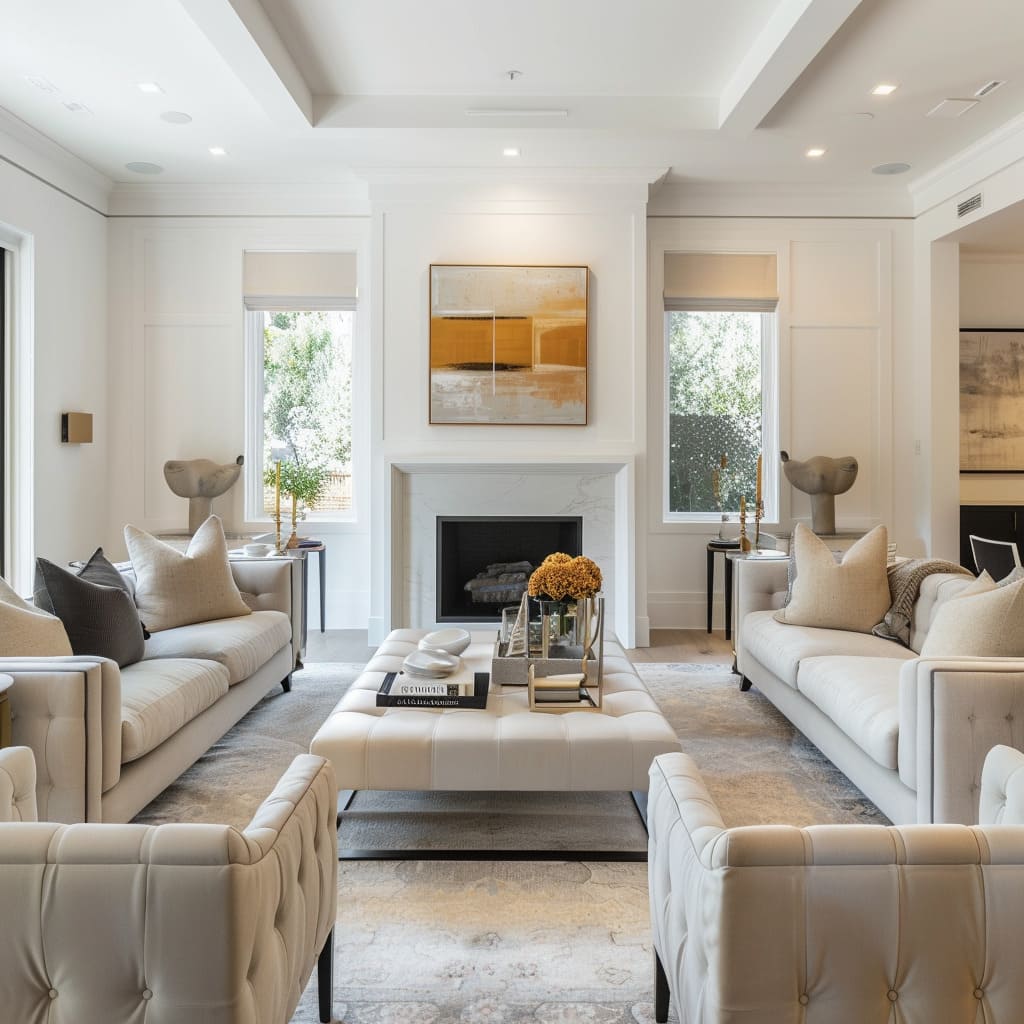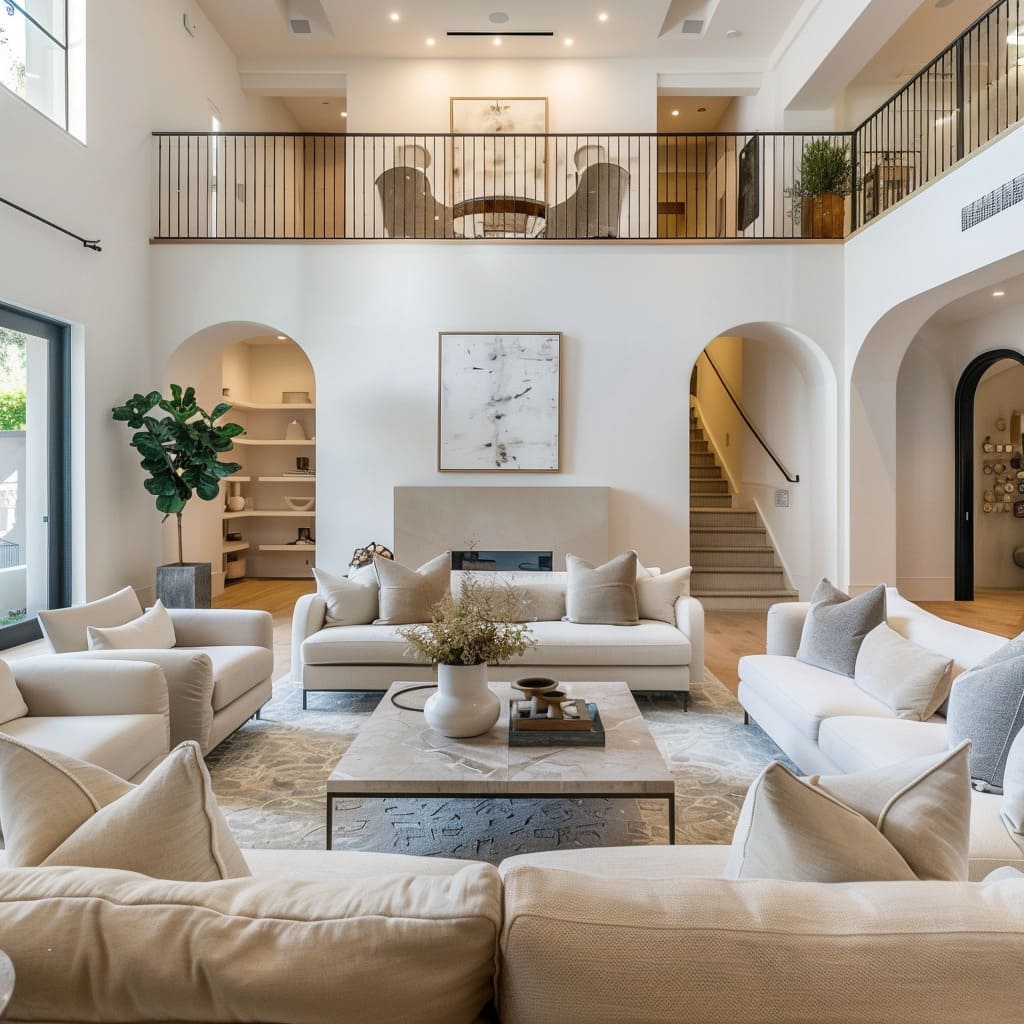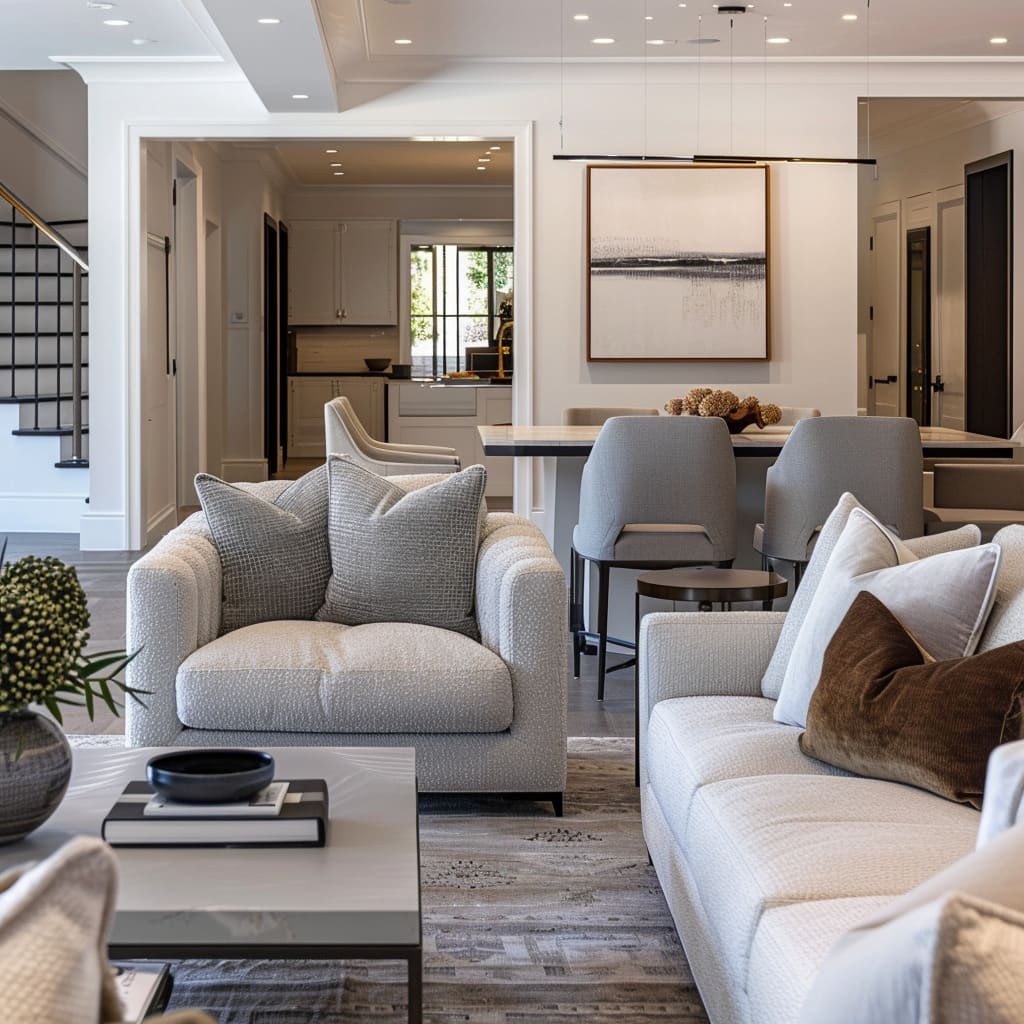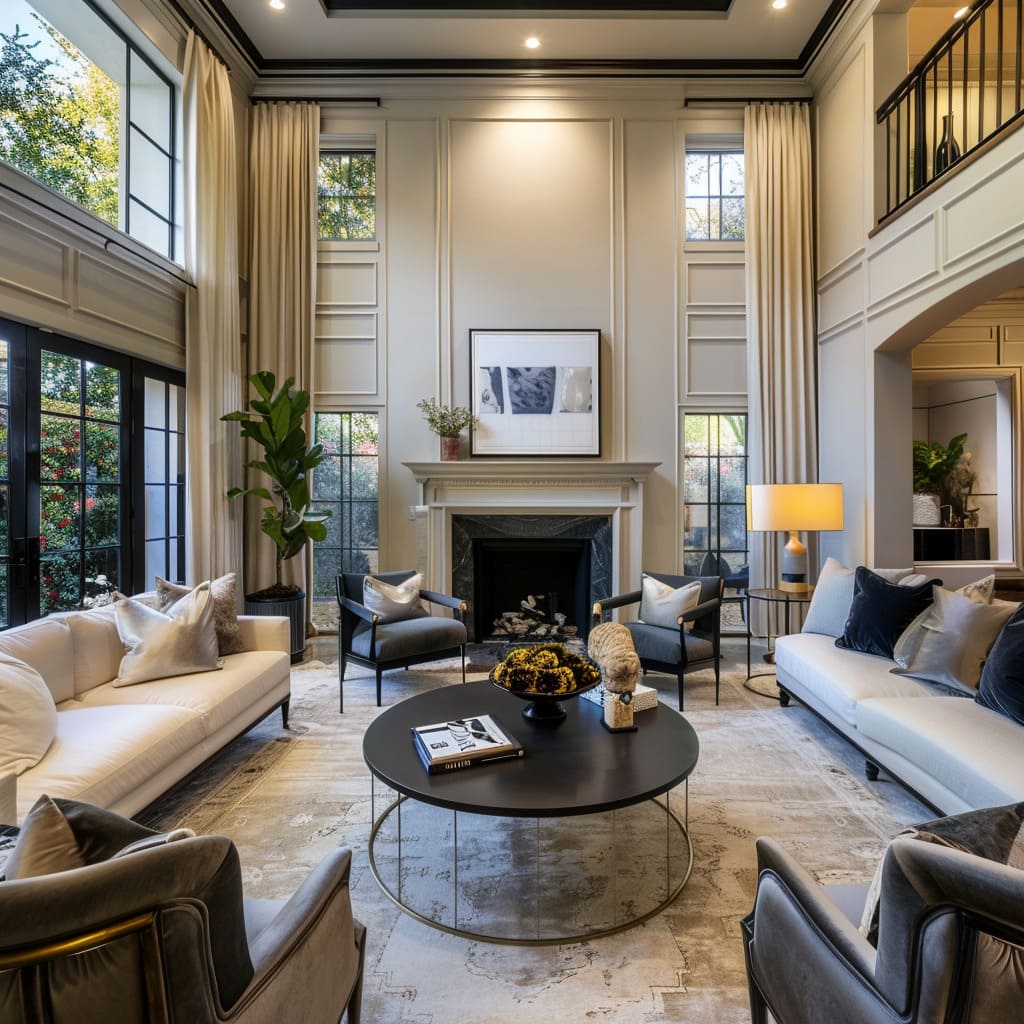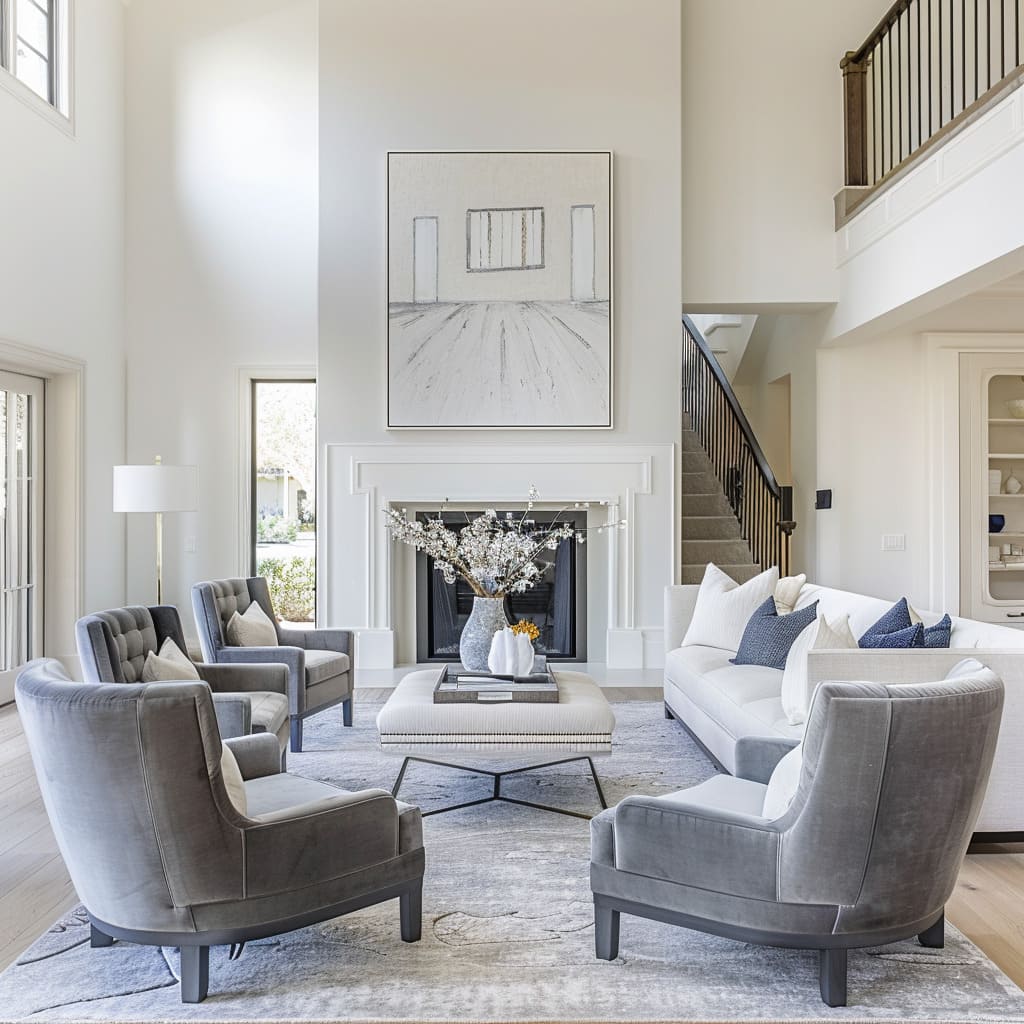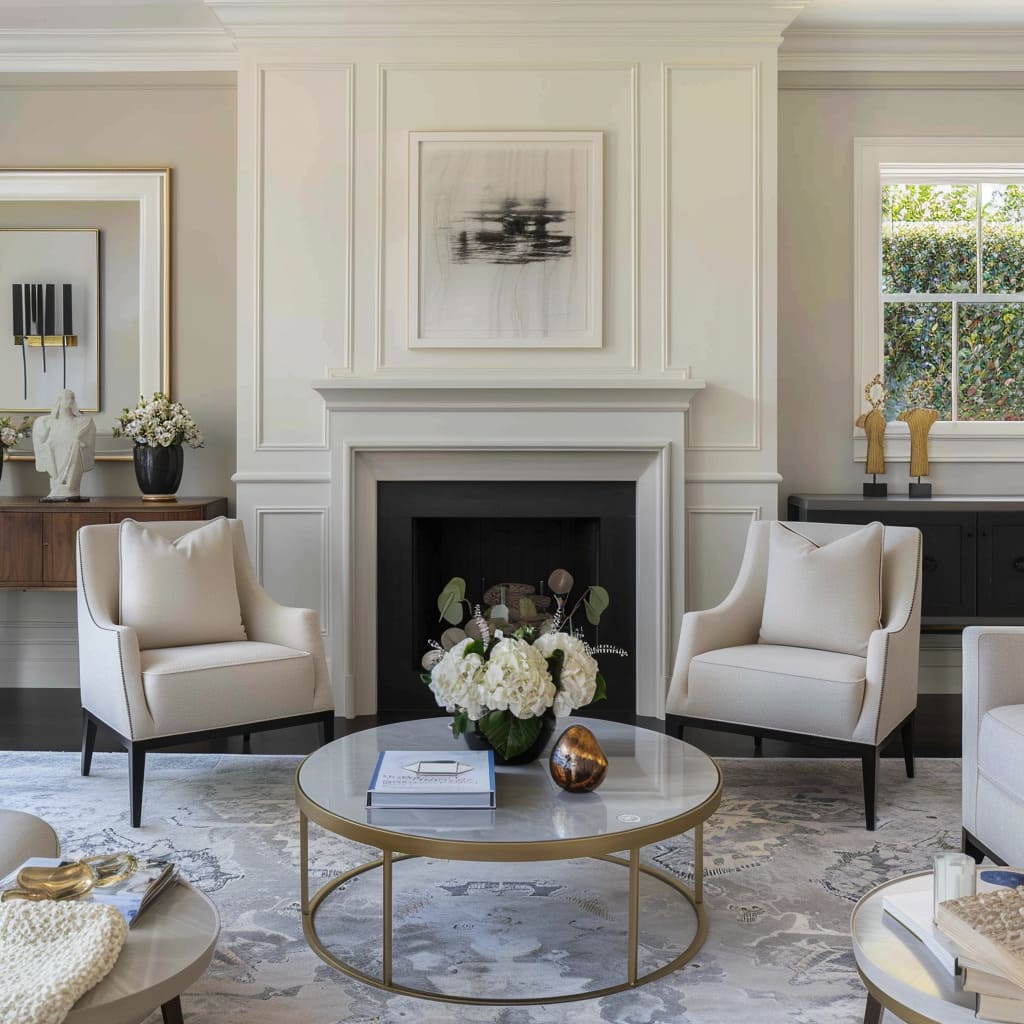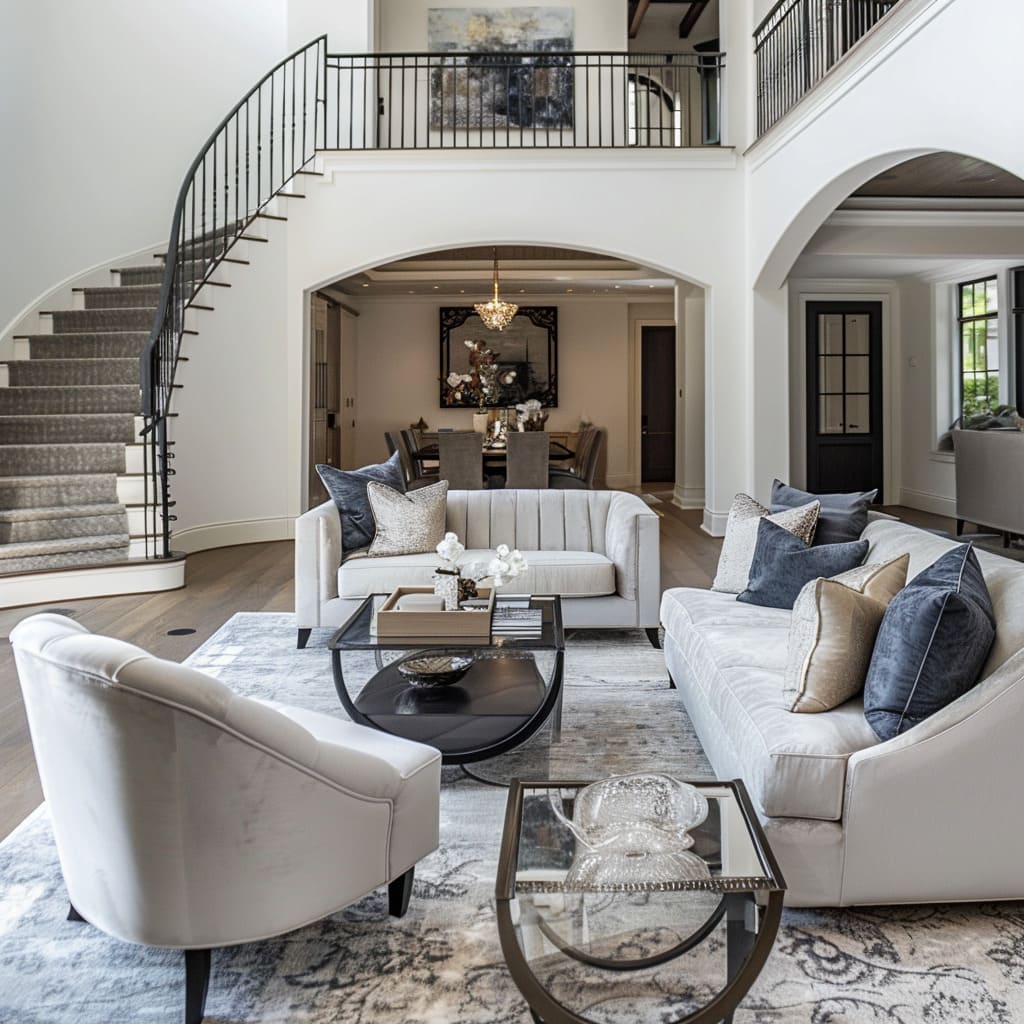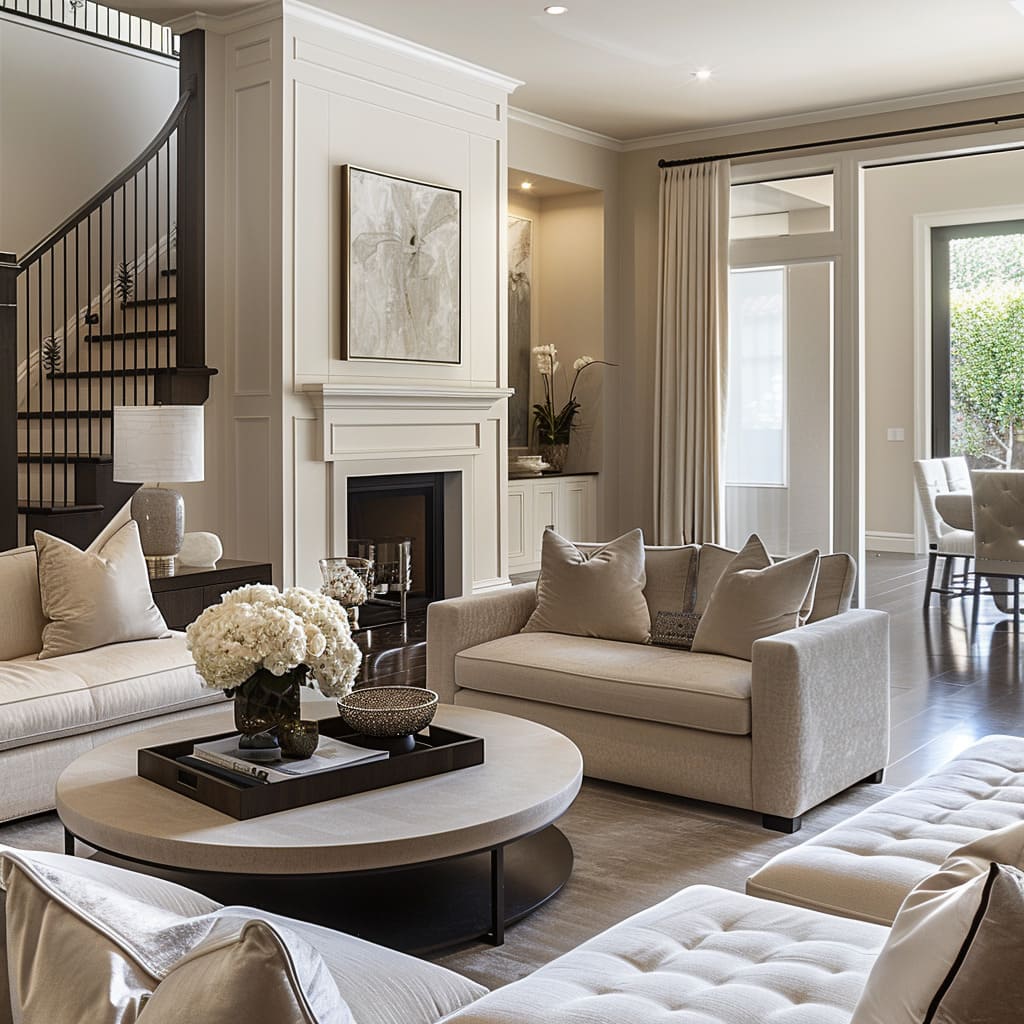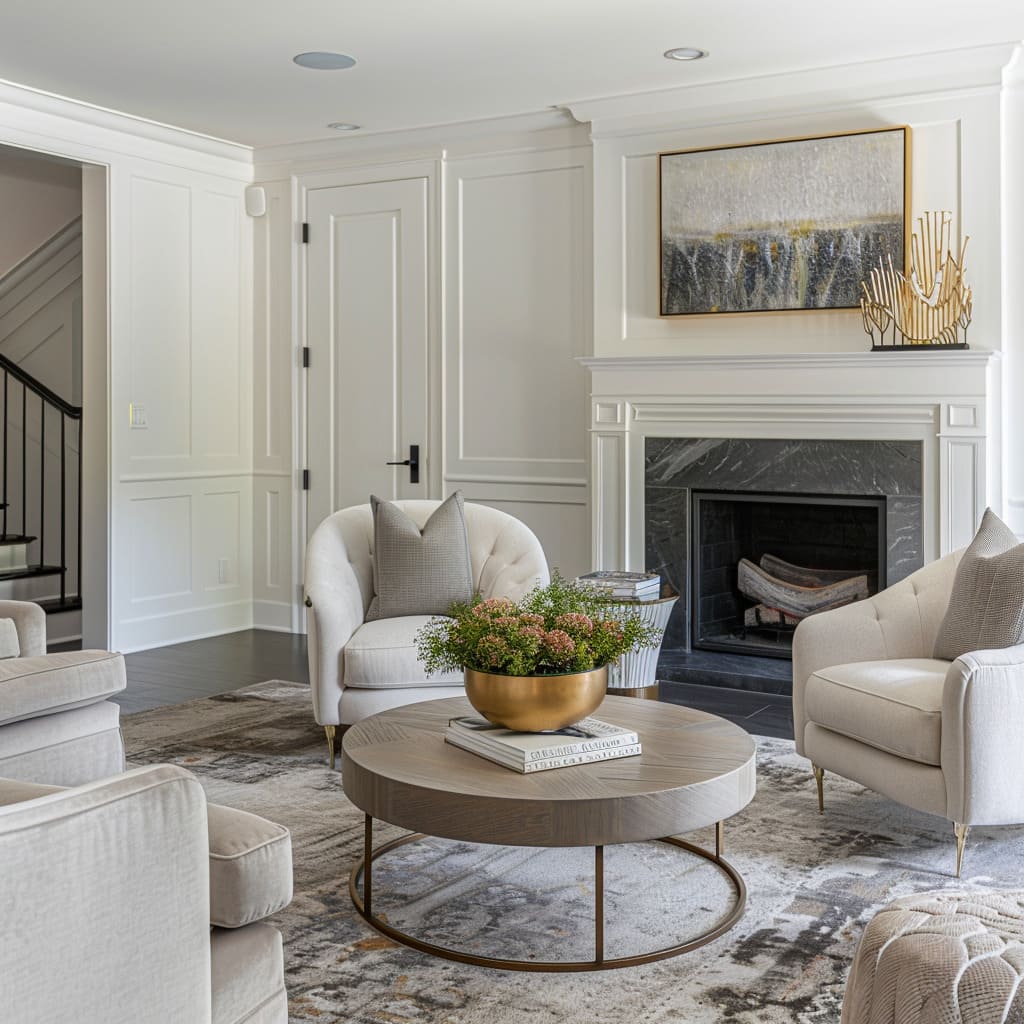In a world where the spaces we inhabit become extensions of ourselves, the art of interior design transcends mere aesthetics, morphing into a language that speaks of individuality, comfort, and the subtle dance between form and function. It’s a language of silent communication, where every corner, curve, and crevice reveals a chapter in a home’s unique story.
This article pulls back the curtain on the intricate ballet of design elements that make up the soul of contemporary homes, examining how each feature contributes to the creation of a sanctuary that’s not merely seen but felt and experienced in a multitude of ways.
From the majestic welcoming of grand entrances to the delicate whispers of texture and light, we weave through the design tapestry that frames not just the living spaces but also the lives within. As we decode the nuanced symphony of design, we uncover the profound ways in which the art of creating spaces has evolved, reflecting a consciousness that intertwines the practical with the personal, the seen with the felt, and the individual with the universal.
Grand Entrances and Expansive Views
Creating a dramatic first impression is crucial in upscale interior design. Elements such as ample glass, grand archways, and expansive doors are more than just functional; they serve as a testament to the thoughtfulness put into the design.
These components set the stage for a home that communicates both stateliness and warmth upon entry.
The inclusion of grand archways serves as more than mere passageways; they echo the classical architecture of yesteryears, infusing a timeless grace into modern structures. Their curvaceous forms add an air of sophistication, subtly guiding one’s gaze through the space, leading from one room to the next with an almost lyrical rhythm.
Expansive doors provide not just access but an announcement to the world beyond. When opened, they break down barriers between the indoors and the exterior, extending the living space outwards, offering an invitation to explore what lies beyond.
The grand scale of these entrances ensures they remain memorable to both residents and guests alike.
Ample glass usage throughout the living area achieves more than the mere inflow of daylight; it represents transparency and openness, connecting the occupants with the outside world in an unobstructed manner. It’s the clarity and breadth of view that give a sense of freedom and infinity within the confines of home walls.
The floor-to-ceiling windows punctuate the living spaces, providing an almost theatrical presentation of the outdoors. Whether framing a manicured garden or a striking cityscape, these windows act as living artworks, constantly changing with the time of day and season, thus bringing dynamic natural beauty into the home.
By crafting spaces with such openness and visual connectivity, these designs make for environments that are not just lived in but interacted with on multiple sensory levels, offering a continual interplay between the built environment and the natural world. This integration is a signature mark of refined living spaces, where the boundaries are as limitless as the vistas they frame.
Lighting and Architectural Detailing
The interplay between light and structure is a dance of functionality and art. Delving into how recessed ceilings and spot lighting interact with intricate crown moldings and railing details reveals the precision involved in creating an inviting and aesthetically appealing space.
The consideration given to these elements determines not just the visibility within the space but also the very atmosphere it embodies.
Recessed ceilings provide a subtle complexity to an otherwise uninterrupted expanse, drawing the eye to different levels of depth and height. The lighting installed within these recessed areas is deliberately placed, not to overwhelm but to highlight the ceiling’s features and create a soft, diffuse glow that can make a room feel more intimate and tranquil.
The addition of spot lighting is a method of quietly bringing attention to the distinct areas within a room. Whether accentuating a reading nook or illuminating a piece of art, these lights serve a dual purpose: to functionally brighten a space and to artistically create pockets of warmth and interest throughout the room.
Crown moldings are the classic touch that ties the modern to the historical, a detail that suggests a continuity of design traditions. Their presence in a room adds a level of detail that speaks to a careful craftsmanship, a celebration of ornamental beauty that frames the boundary between wall and ceiling with grace.
Banisters and railings, often overlooked in their functional role, are afforded an opportunity to shine as sculptural elements in their own right. With designs that can range from the intricately wrought to the sleekly modern, these features contribute to the overall narrative of the design, offering both safety and visual pleasure.
Together, these lighting elements and architectural details construct an environment that is considerate of both its inhabitants’ practical needs and their desire for spaces that inspire. It is a design philosophy that sees every beam of light and line of trim not just as necessary components but as parts of a larger, harmonious whole.
Spaciousness and Flow
In a finely crafted interior, the sensation of breadth and fluidity is paramount. The expansiveness of an area can greatly influence one’s experience within it, granting a liberating sense of freedom and movement.
Wide hallways act as the arteries of a home, ensuring unobstructed passage between rooms and establishing a rhythm to the domestic life within.
These expansive corridors are more than mere pathways; they are galleries, with walls that may host a variety of art, or windows that offer glimpses of the world outside. They set a pace for the dwelling, allowing for leisurely transitions that can calm and prepare one for the change in setting as they move from room to room.
Introducing large potted plants within these spaces serves a dual purpose; their verdant presence is a visual respite while they also improve the air quality. The strategic placement of these living sculptures contributes to the overall wellness of the inhabitants, providing a connection to nature that is as restorative as it is aesthetic.
Oversized mirrors are masterful in their ability to amplify light and craft the illusion of a more expansive area. Positioned thoughtfully, they reflect and accentuate the finest elements of a room, double the perceived space, and bring an additional layer of brightness to corners that might otherwise be shrouded.
The construction of wide staircases is a testament to an understanding of movement as an experience, not just a necessity. They invite ascent with a generous breadth, transforming the act of moving between floors into a moment of grandeur.
Coupled with open nooks, they offer pockets of respite, where one can pause and appreciate the home’s artistry and the life unfolding within it.
Altogether, the flow within a home is a delicate balance of design and utility. Every element, from the width of the walkway to the curvature of a staircase, contributes to a fluidity that makes the space not just a house, but a canvas for living.
It’s in these carefully considered expanses and alcoves that the soul of a home is found.
Decorative Flourishes and Focal Points
The essence of a richly decorated space lies in the subtlety of its ornamentation and the statement made by its central features. A fireplace, for instance, is no mere source of warmth but a ceremonial center around which the life of a room pivots.
Its design can range from minimalist to ornate, yet it always remains the hearth and heart, drawing people together in a quiet celebration of the elemental.
Unique art displays serve as the narrative backbone of a room, telling stories through their textures, colors, and forms. Whether it’s a striking sculpture that captures the light in curious ways or a painting with captivating imagery, these pieces are carefully chosen to provoke thought and conversation, encouraging dwellers to pause and reflect.
Sophisticated glass tables are not just surfaces upon which to rest items; they are the clear waters upon which the reflections of a room can play. Their transparency allows for a visual continuation of the space, while their form offers a sleek counterpoint to the softer textures that may surround them, providing an understated yet potent elegance.
Alcove shelving is a testament to the importance of both form and function, offering a place for items to reside in an organized yet visually appealing manner. Here, books, collections, and treasured mementos are given pride of place, allowing for personal expression within the architectural confines of the home.
Decorative vases and bowls are the delicate final touches to any room, akin to the brushstrokes that complete a masterpiece. These objects, chosen for their material, shape, and color, bring a layer of detail and fineship that complements the larger elements within the space, binding everything into a cohesive whole.
Each of these components – the fireplace, art, glass tables, shelving, vases, and bowls – work in concert to create a symphony of visuals that is pleasing and restful. They are the final flourishes that transform a house into a portrait of those who inhabit it, reflecting their tastes, histories, and the rhythms of their daily lives.
Unique Design Elements and Personal Touches
The character of a luxury home is often defined by the bespoke details that resonate with the individuality of its inhabitants. These elements are the personal signature of the owner, a narrative told through the medium of design.
Bespoke design elements such as custom-built features and hand-selected materials transform a space from standard to singular, ensuring no two residences are exactly alike.
Non-traditional furniture shapes break away from the conventional, offering an unexpected twist that catches the eye and provokes interest. These pieces, with their unusual lines and forms, serve as functional art.
They demand attention and spark curiosity, becoming the focal point of any room they inhabit, reflecting the avant-garde tastes of those who chose them. Statement pieces, whether they be bold sculptures, dramatic light installations, or striking pieces of furniture, serve as anchors within the living space.
They inject a sense of drama and personality into the surroundings. It’s not just their scale but the intent behind their placement that makes them stand out – they’re chosen to surprise, to delight, and sometimes to challenge.
French doors bring a sense of refinement and accessibility to the environment. Their classic design and symmetry provide a visual link between spaces, while their glass panes allow light to filter through, creating a bright and inviting pathway from indoors to out.
They are the embodiment of sophistication, merging indoor luxury with the beauty of the natural world outside.
The interplay of these unique elements and personal touches results in an interior that’s as much a portrait of its owner as it is a space to live. This careful curation of bespoke, non-traditional, and personal items is what transforms a living area into a personal sanctuary that is as distinct and individual as a fingerprint.
As we conclude this exploration of interior spaces, we’re reminded that the environments we craft around us are more than collections of objects and designs; they are living, breathing extensions of our lives and personalities. Each element, chosen with intent and placed with care, forms part of a larger narrative that is as complex and rich as the individuals it reflects.
From the commanding presence of architectural statements to the intimacy of personal touches, the art of interior design is a testament to the human desire not only for beauty but for spaces that resonate with our deepest sensibilities.
This journey through the myriad of design facets illustrates that the creation of a home is akin to the creation of a personal work of art. It’s a dynamic blend of tradition and innovation, a confluence where the timeless and the modern meet.
As the doors close behind us, the essence of these carefully curated spaces lingers, reminding us that the truest form of luxury is the freedom to express oneself through the silent poetry of home design.

